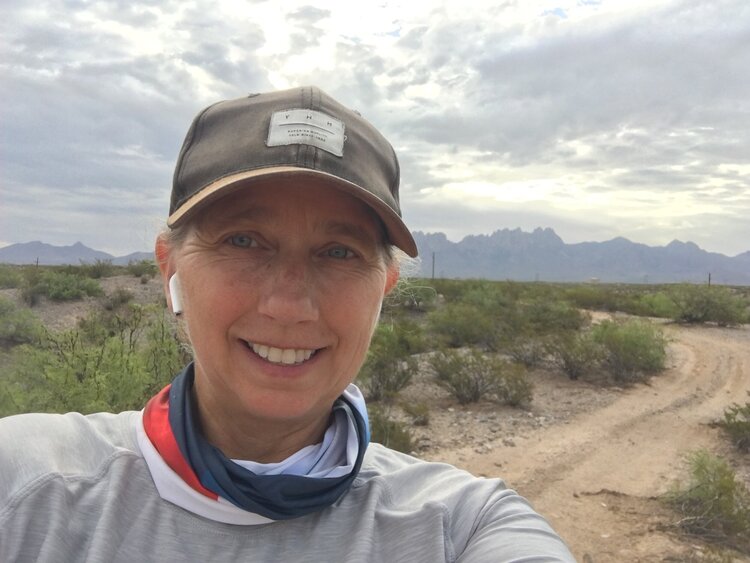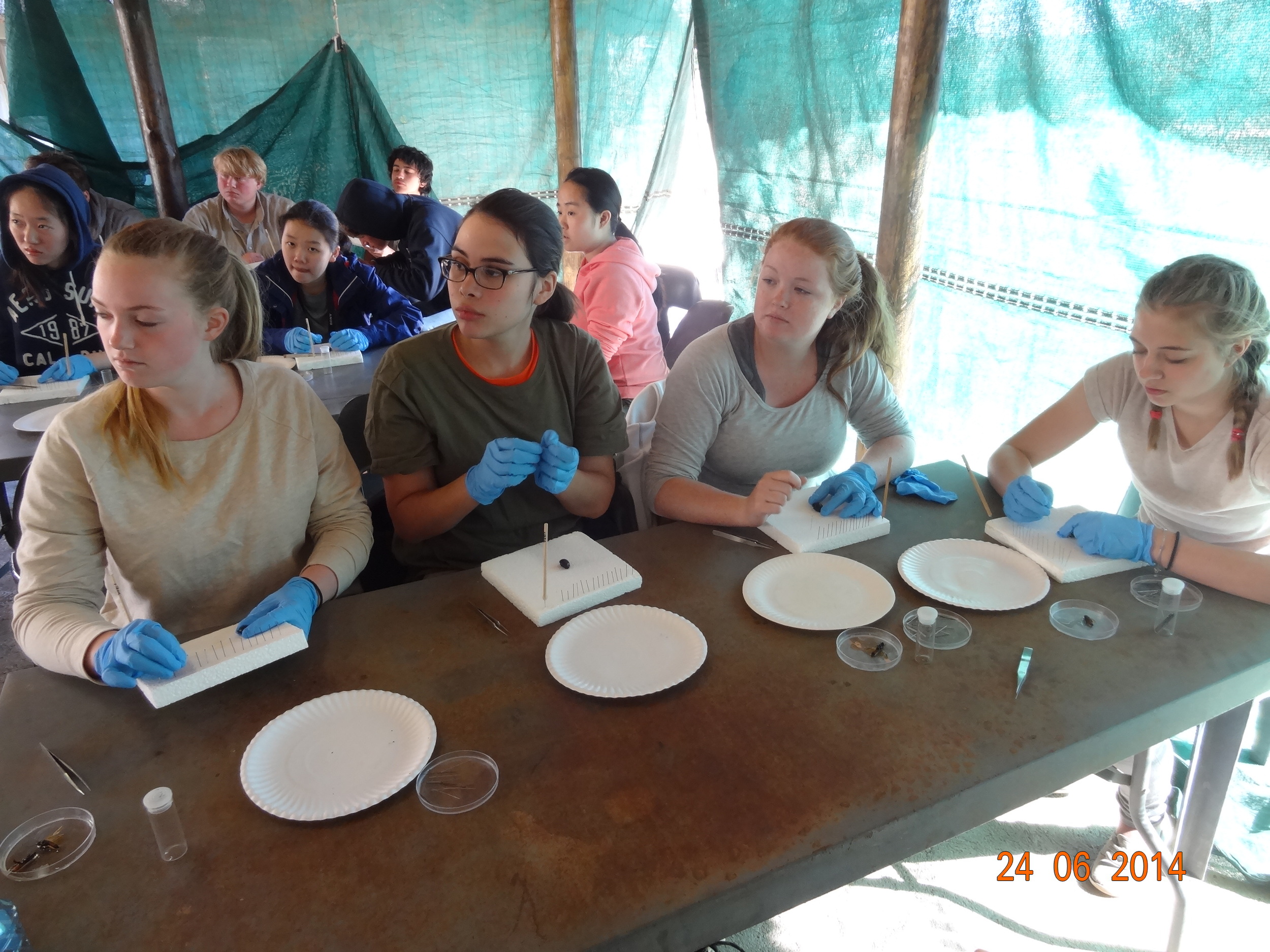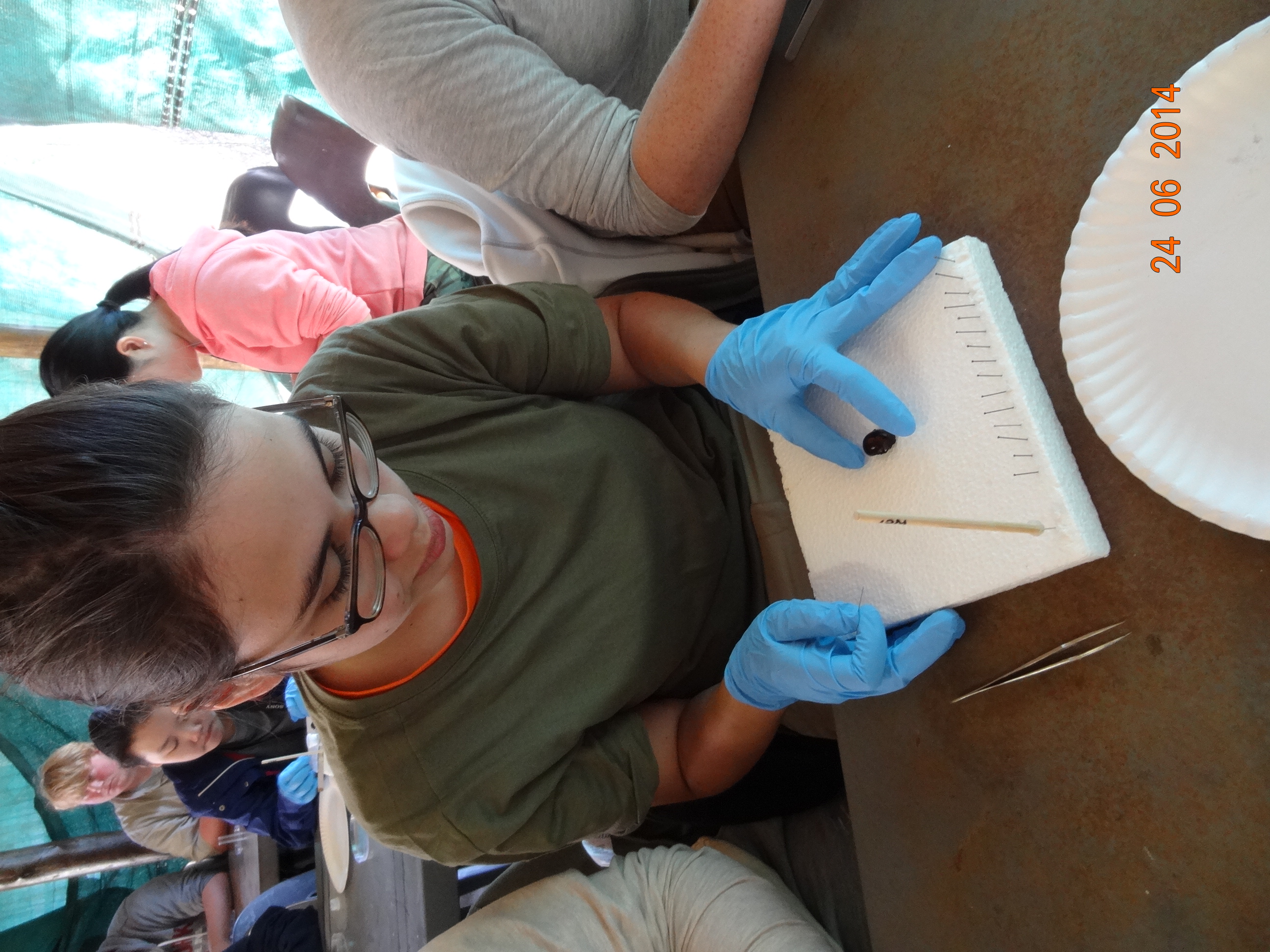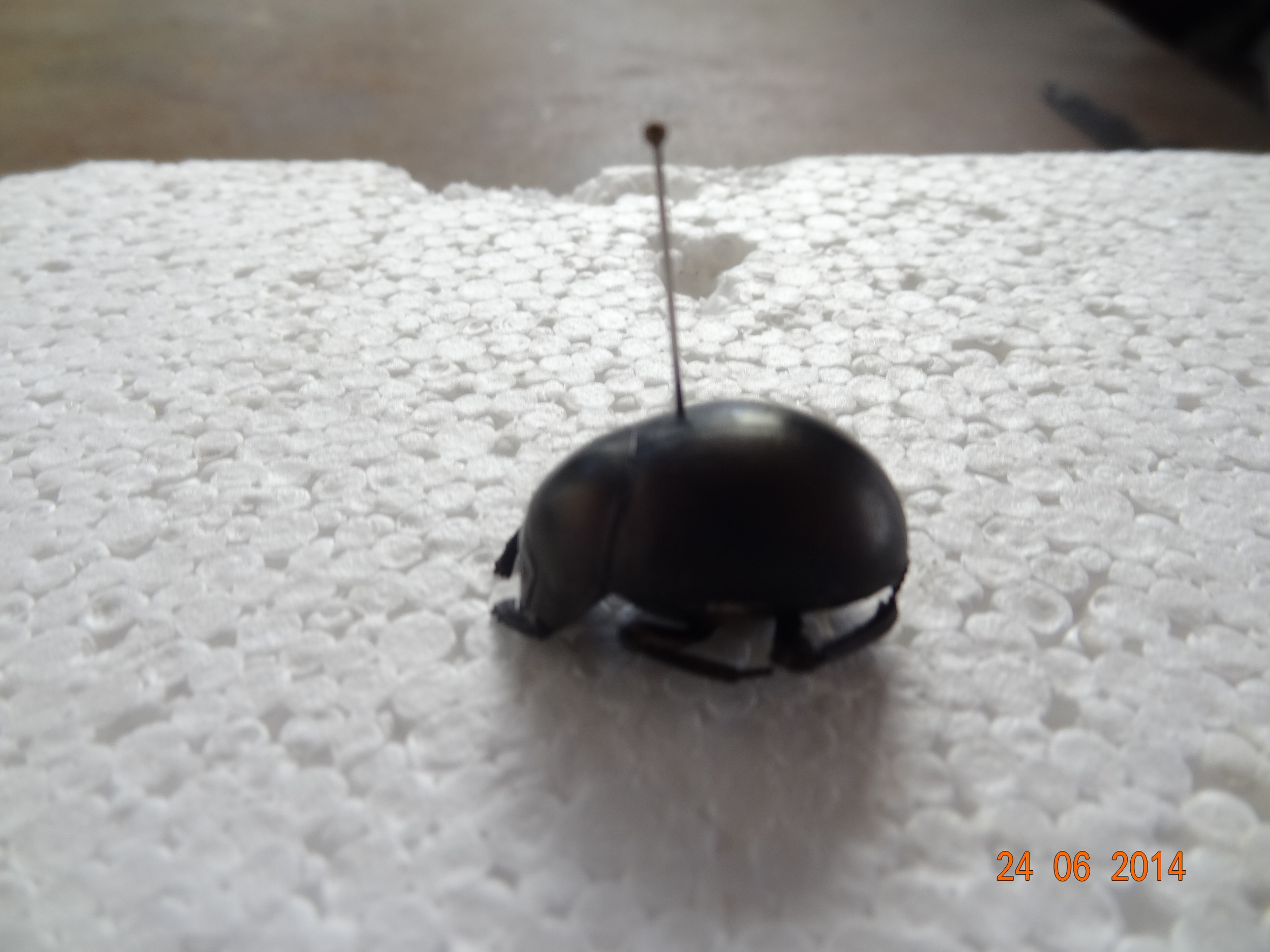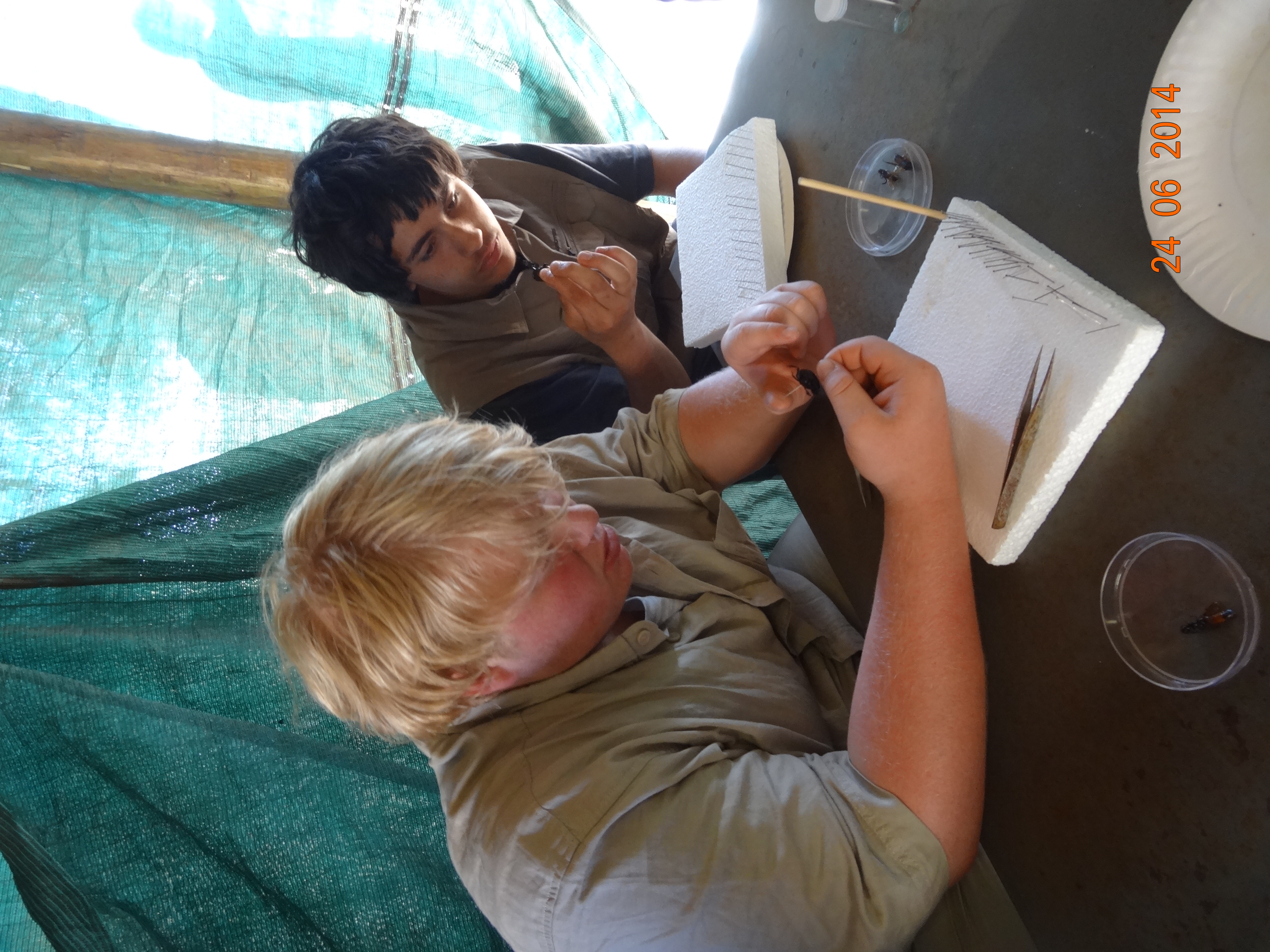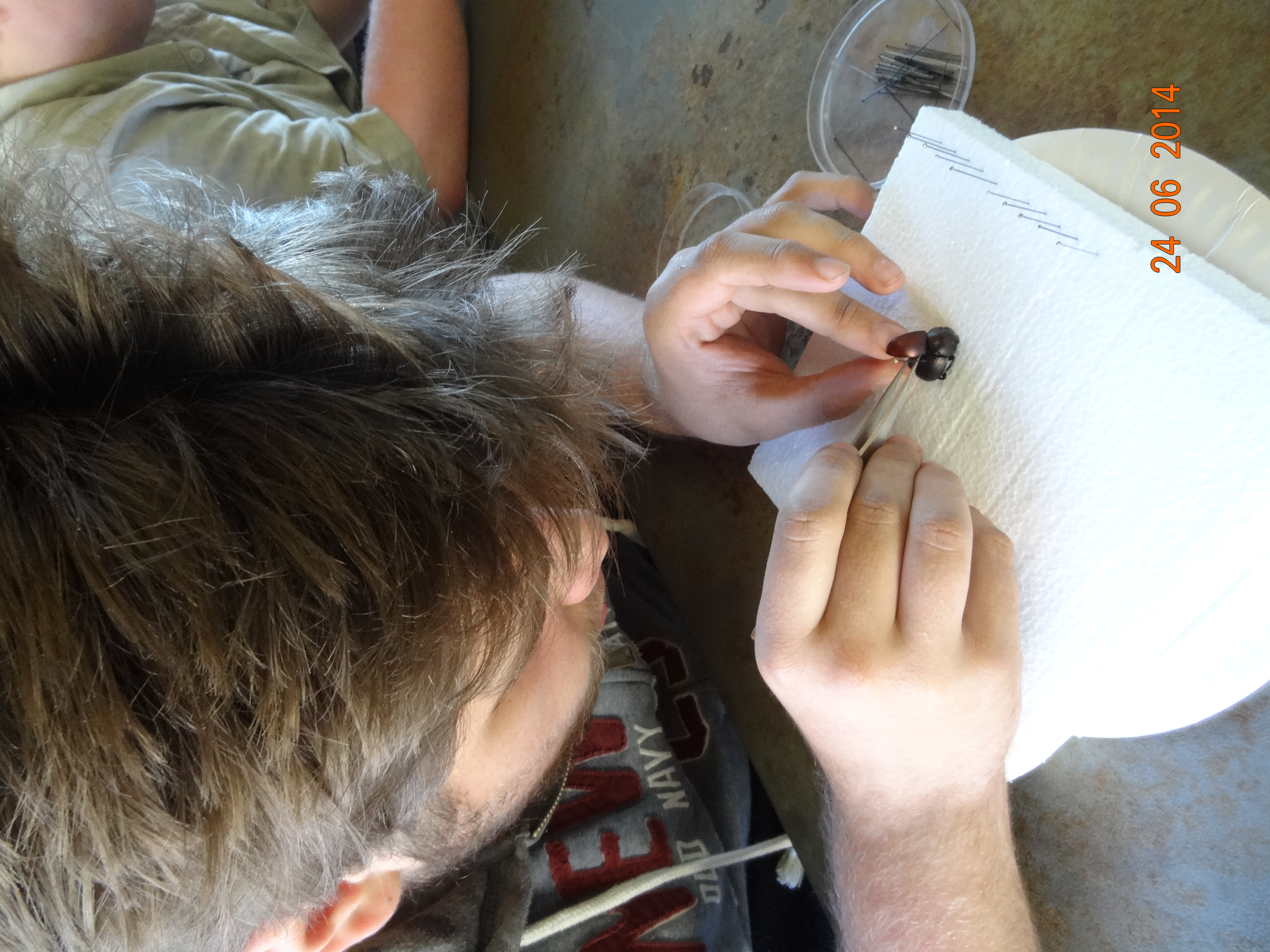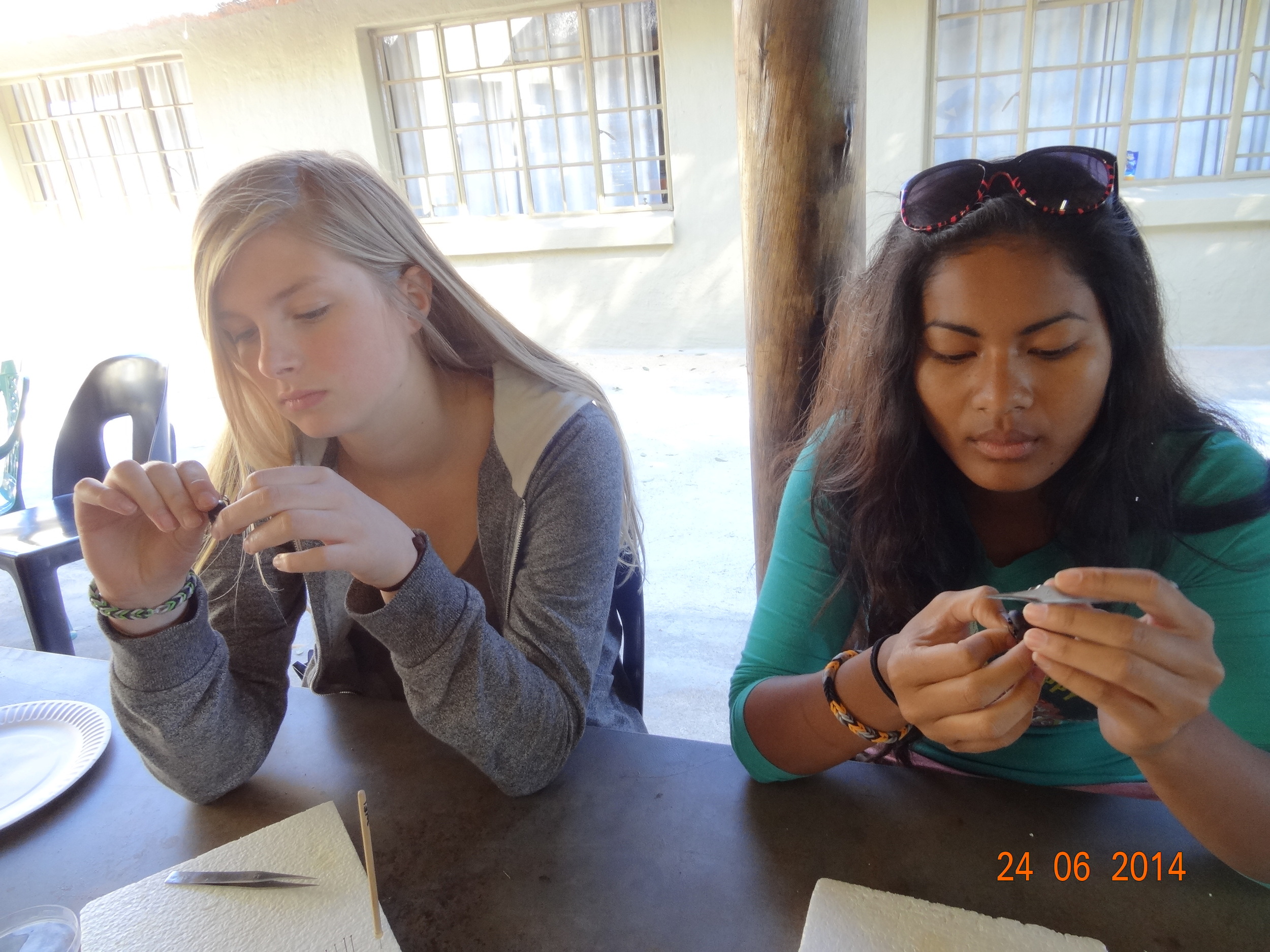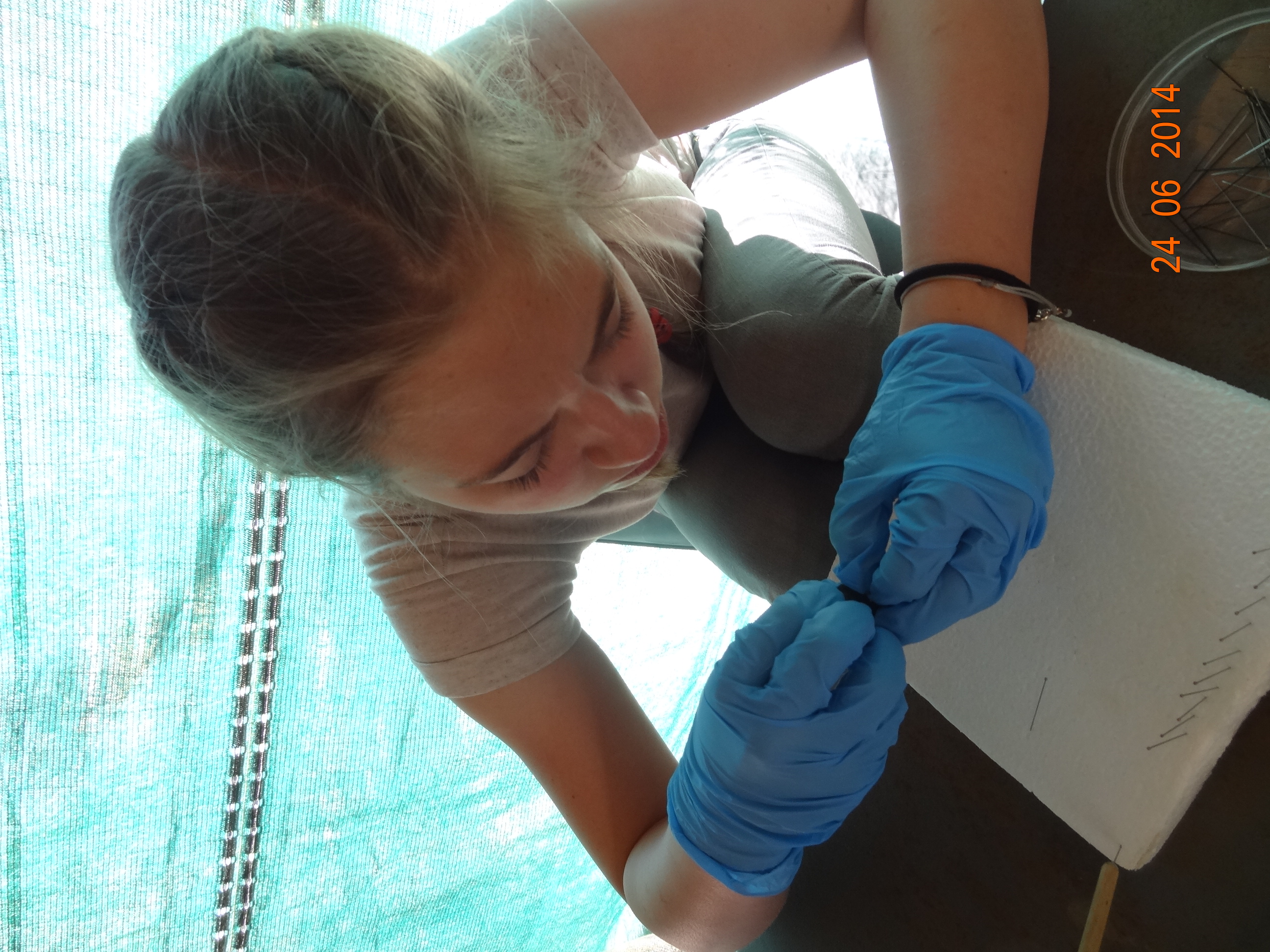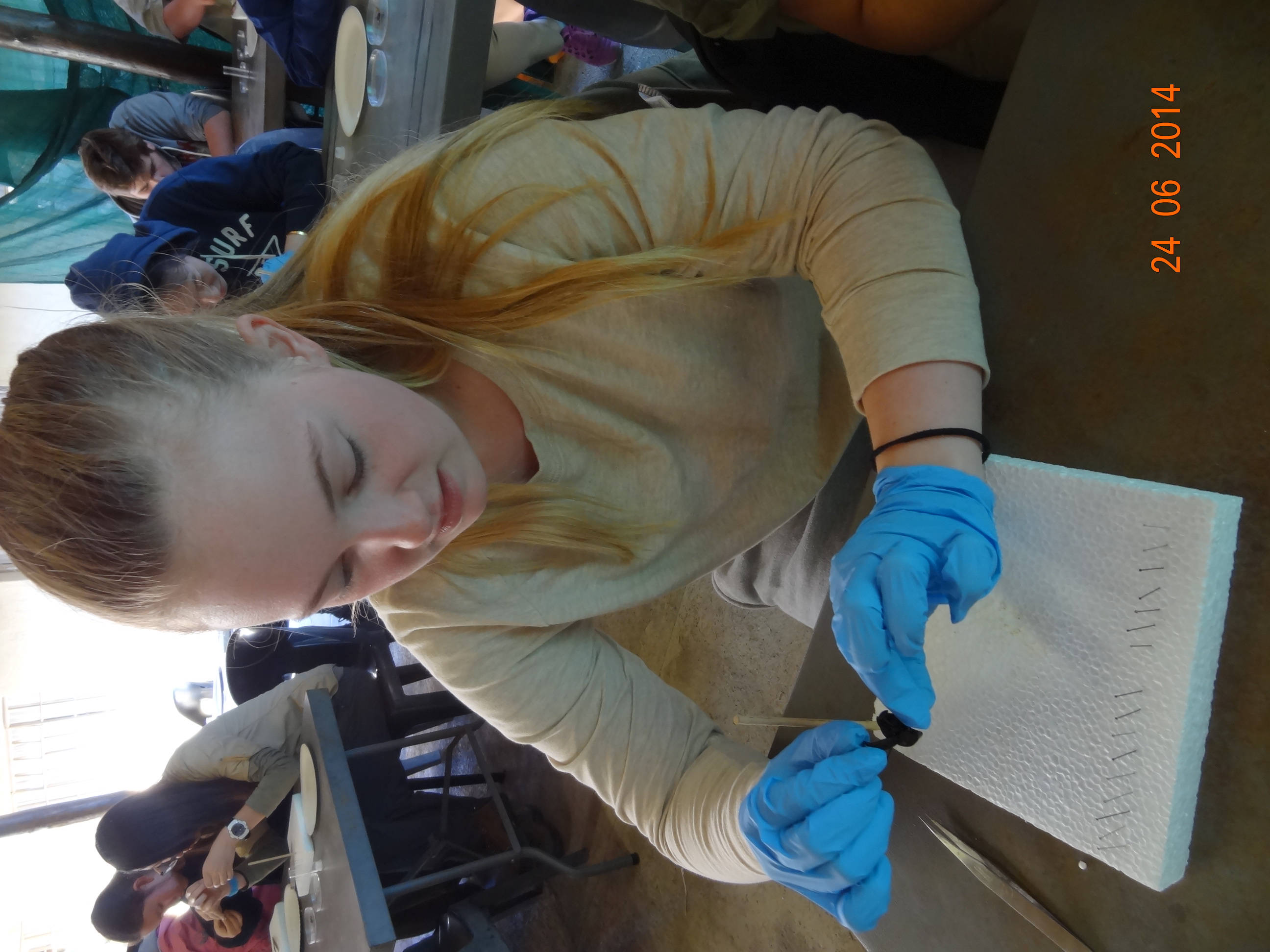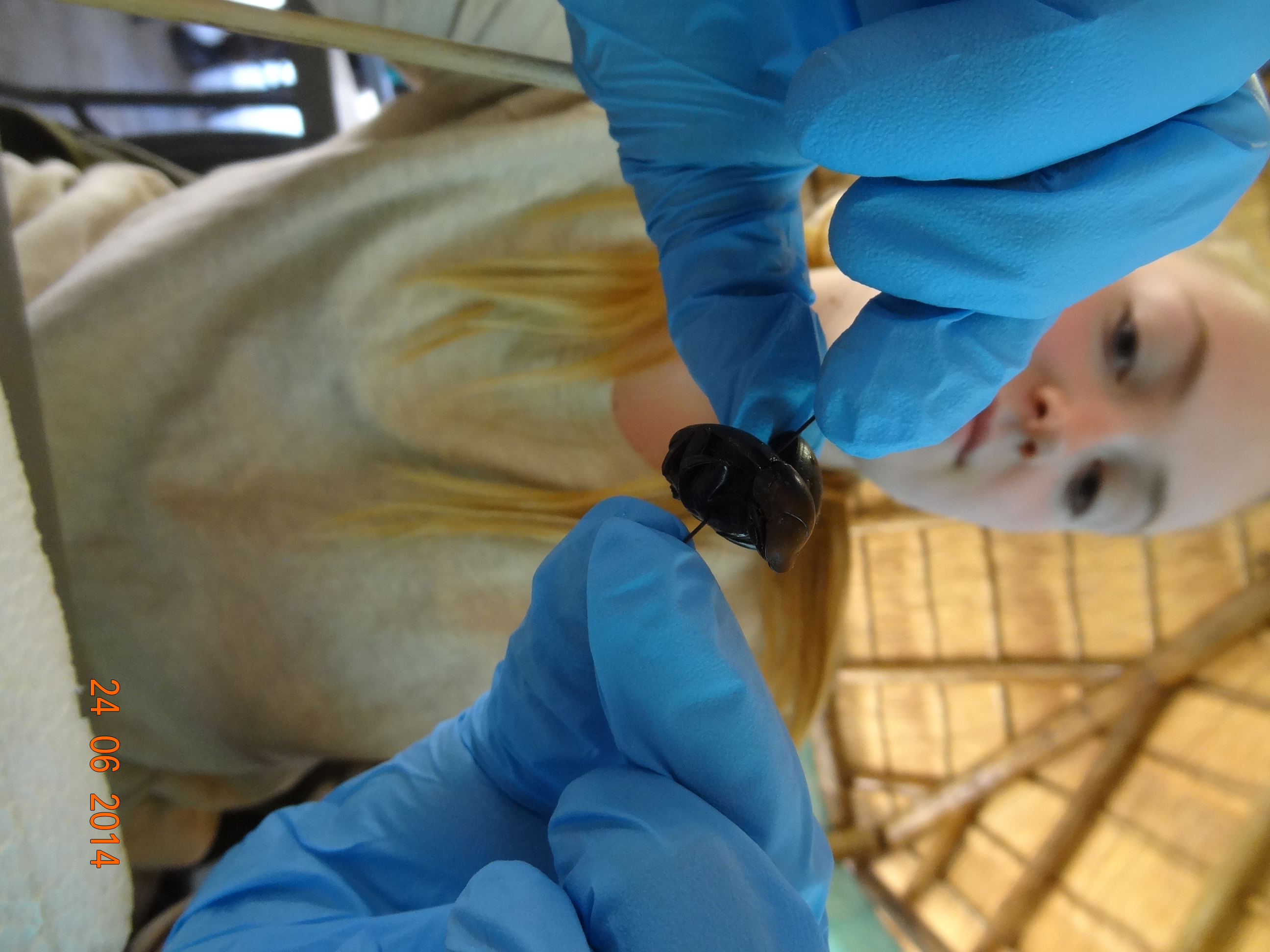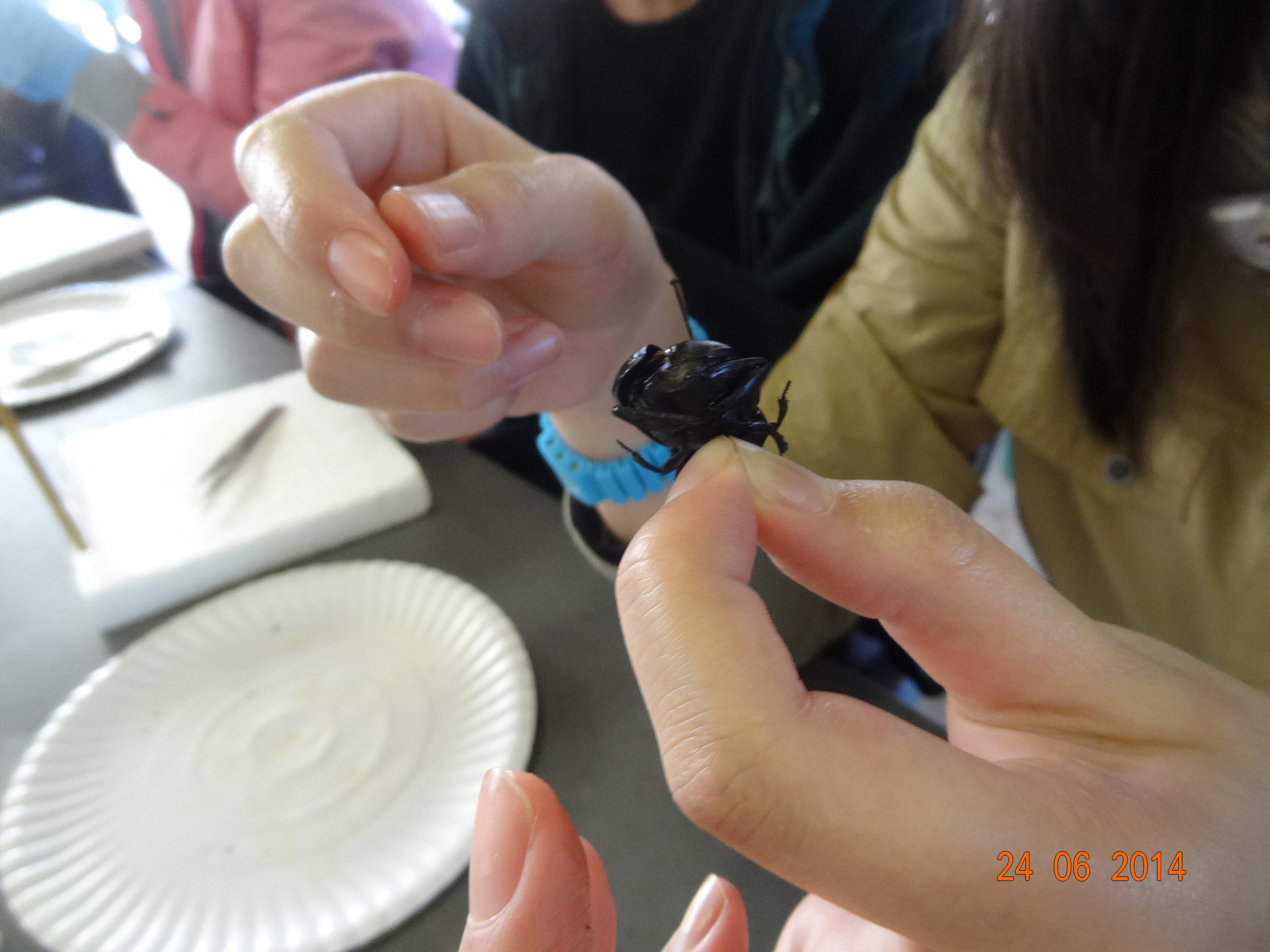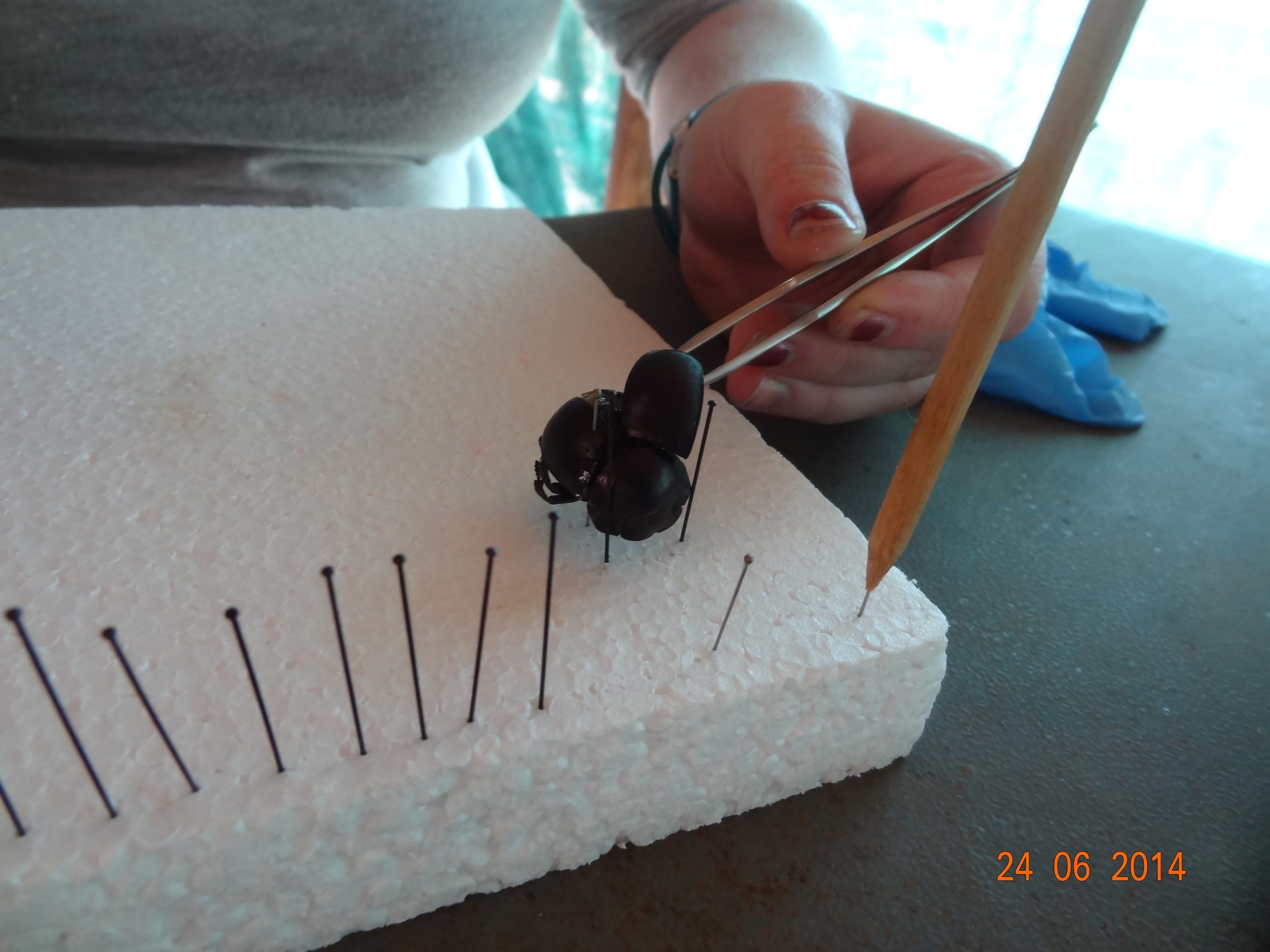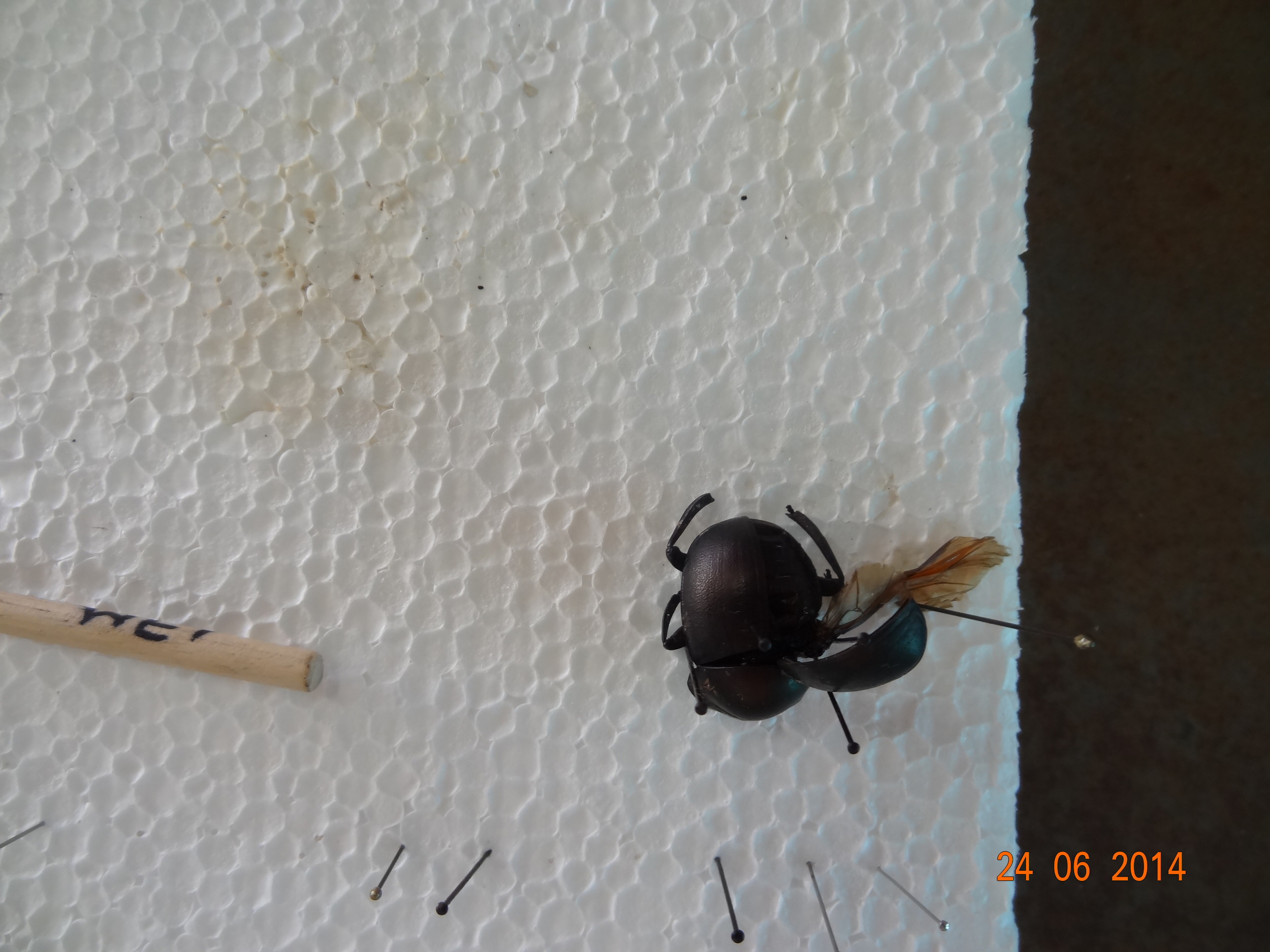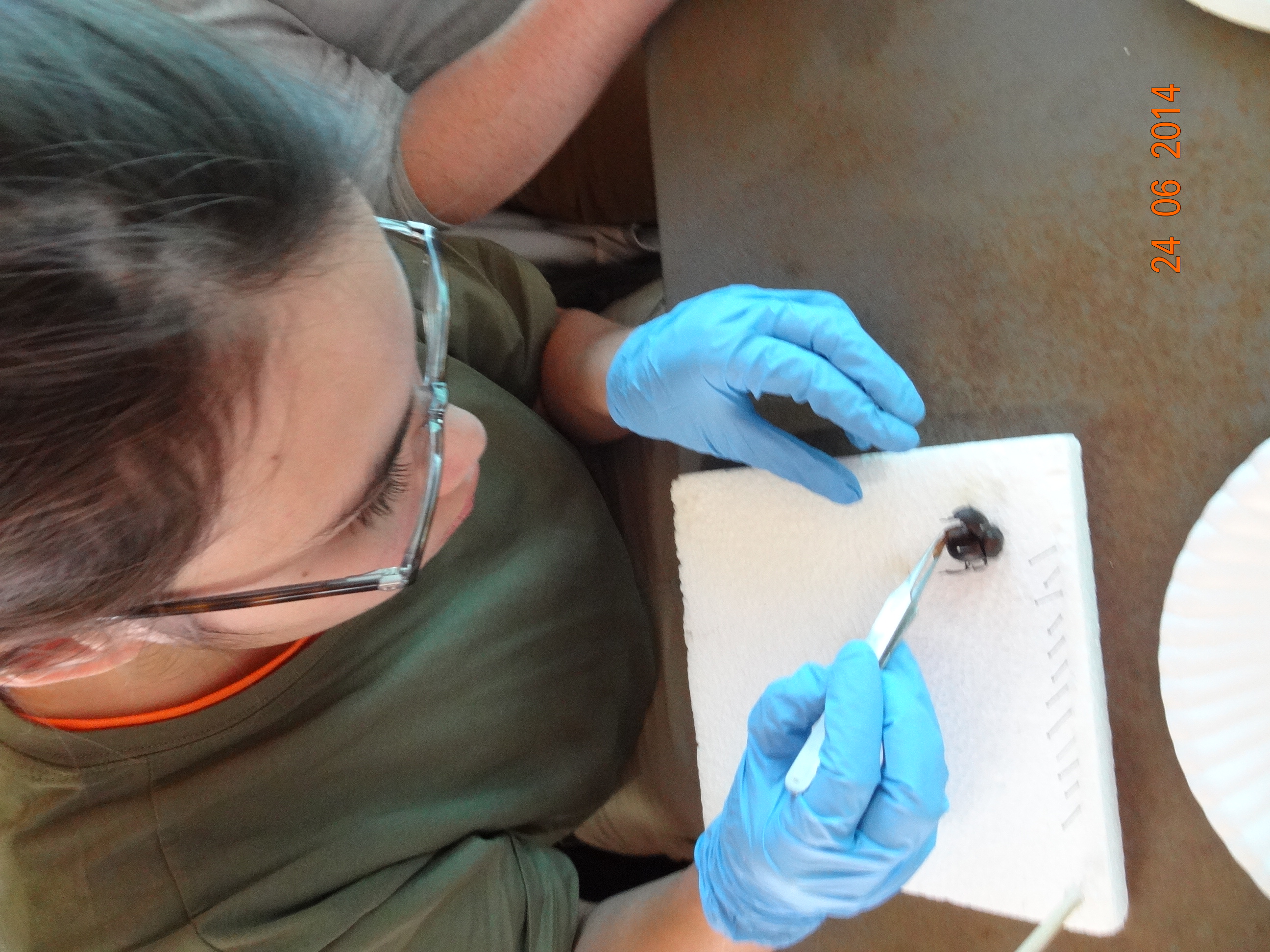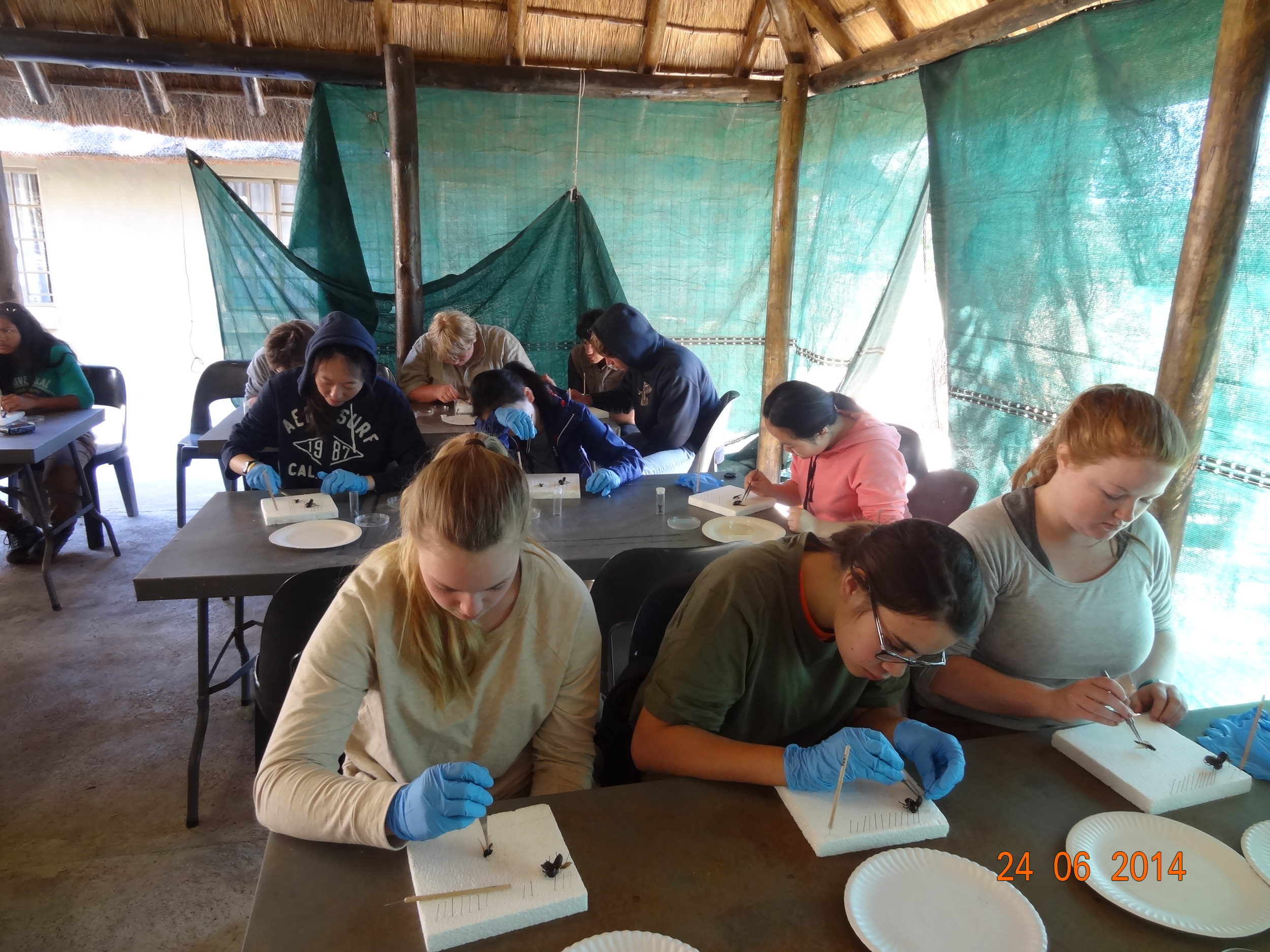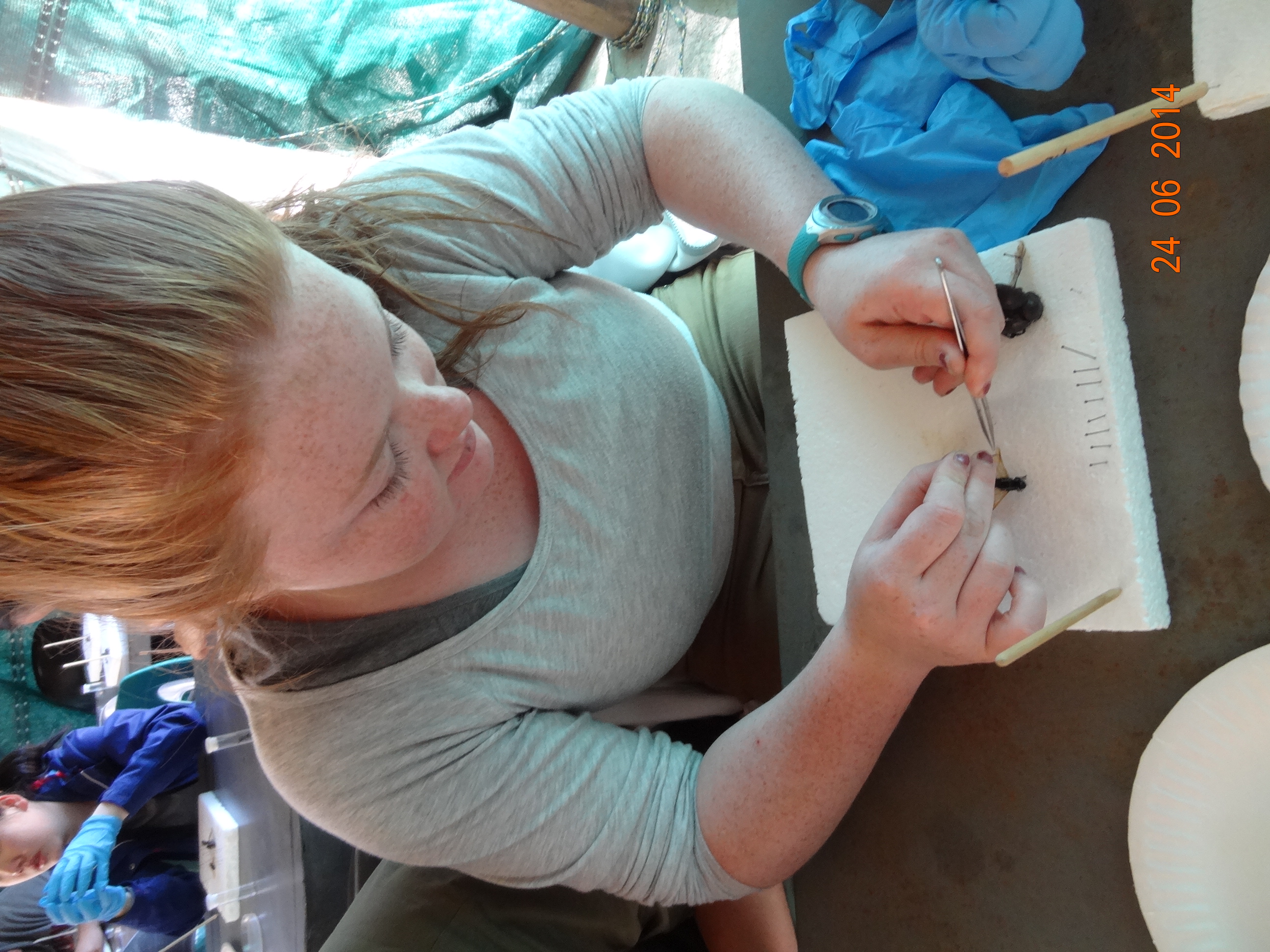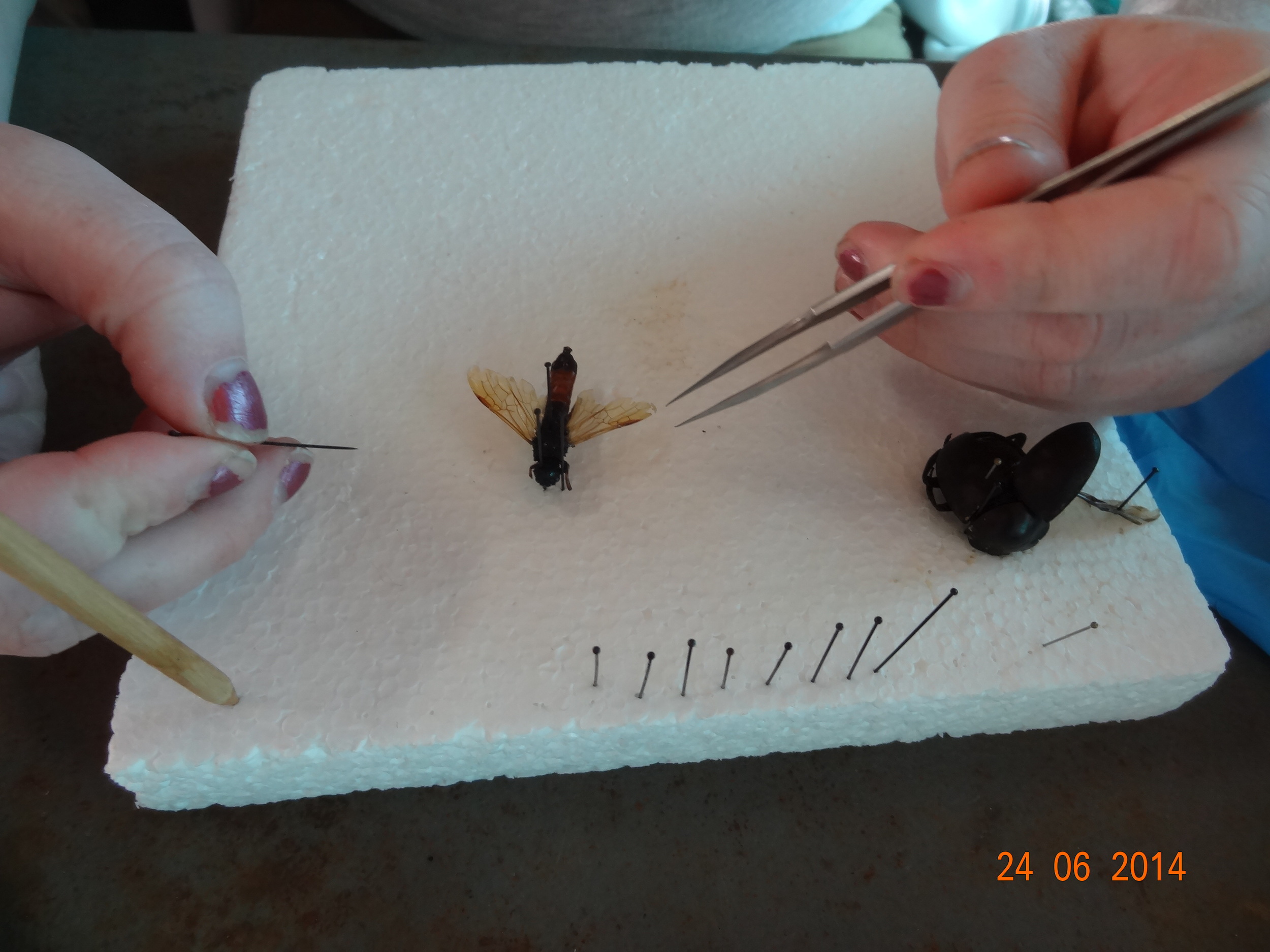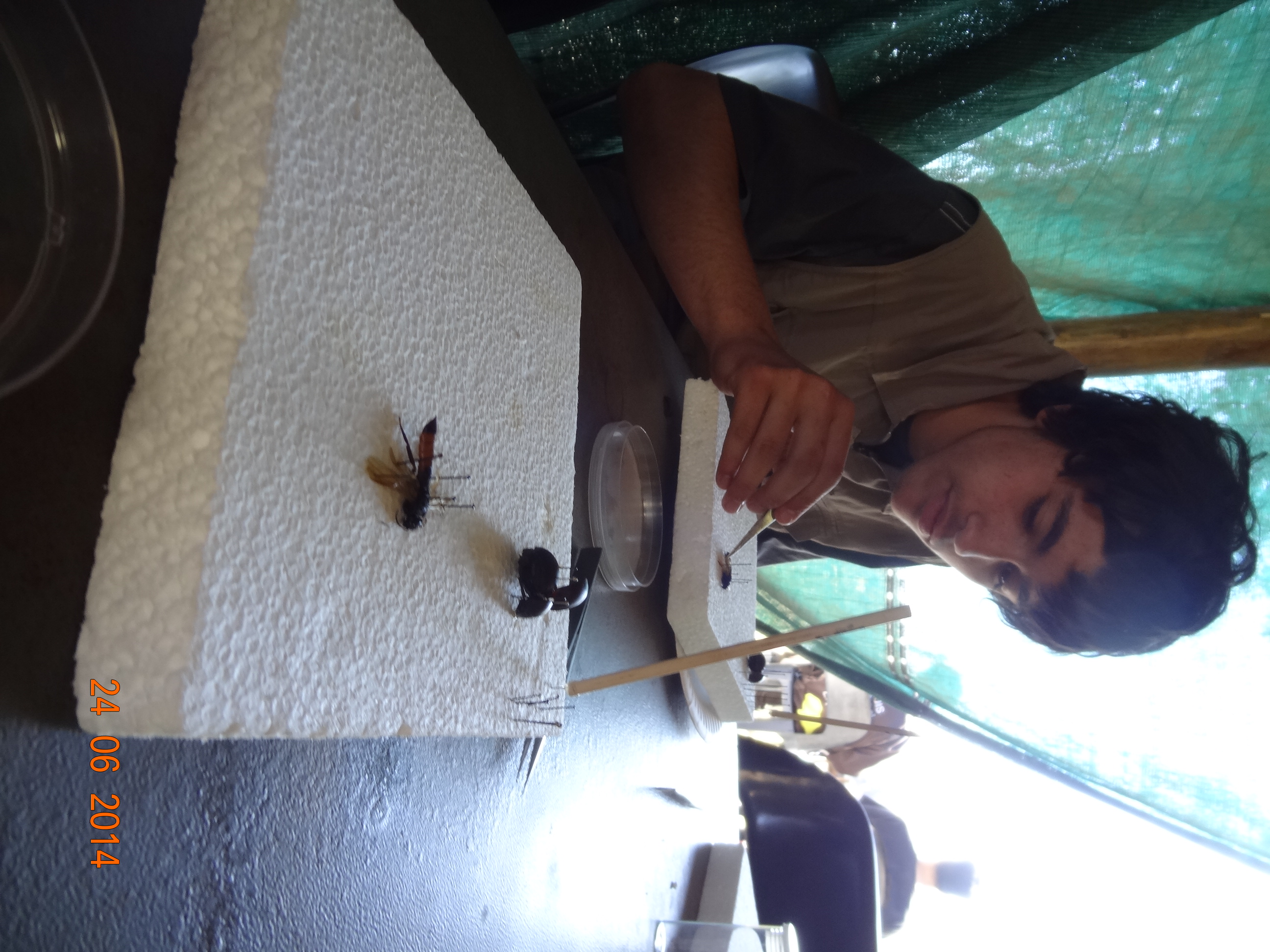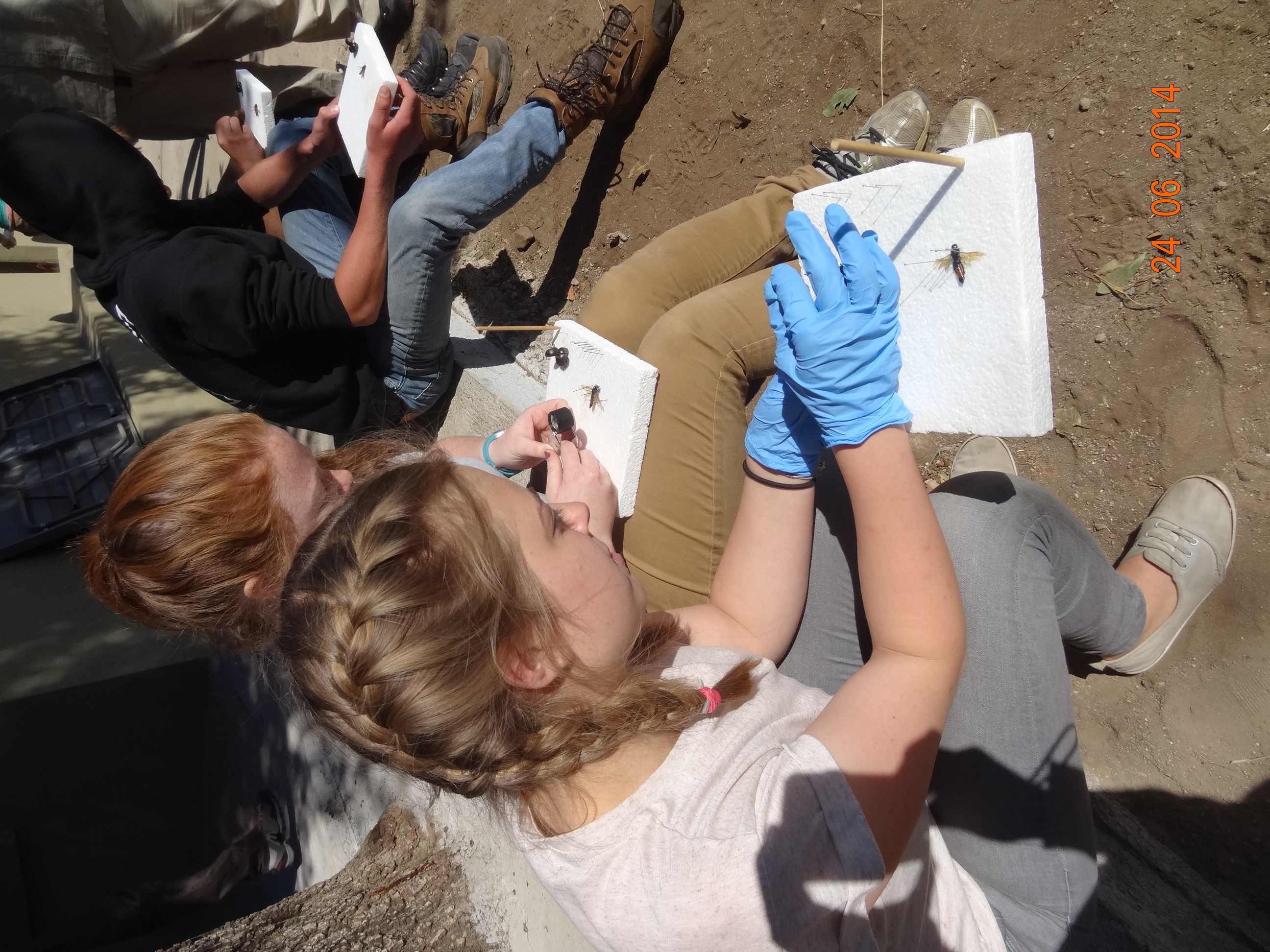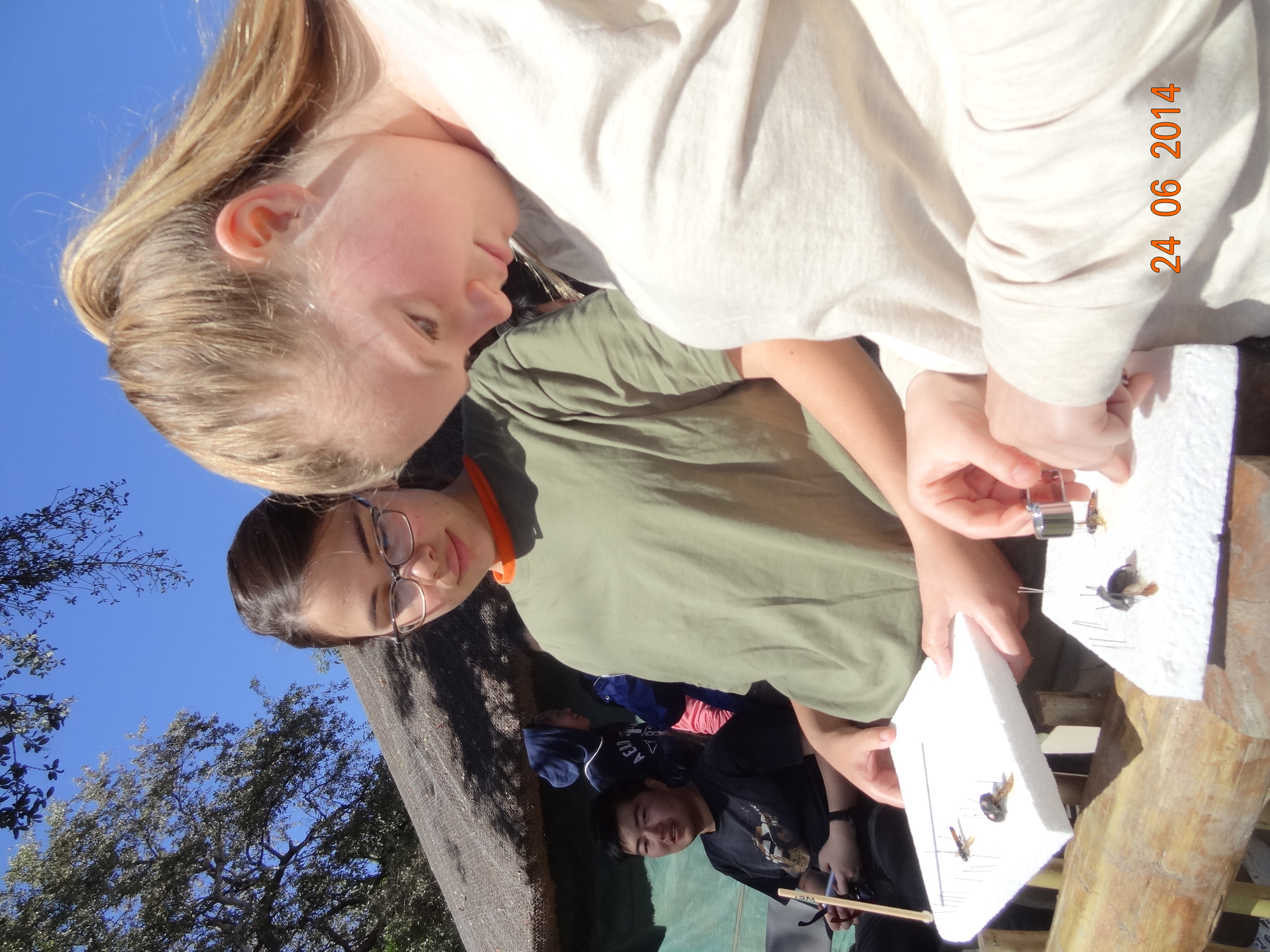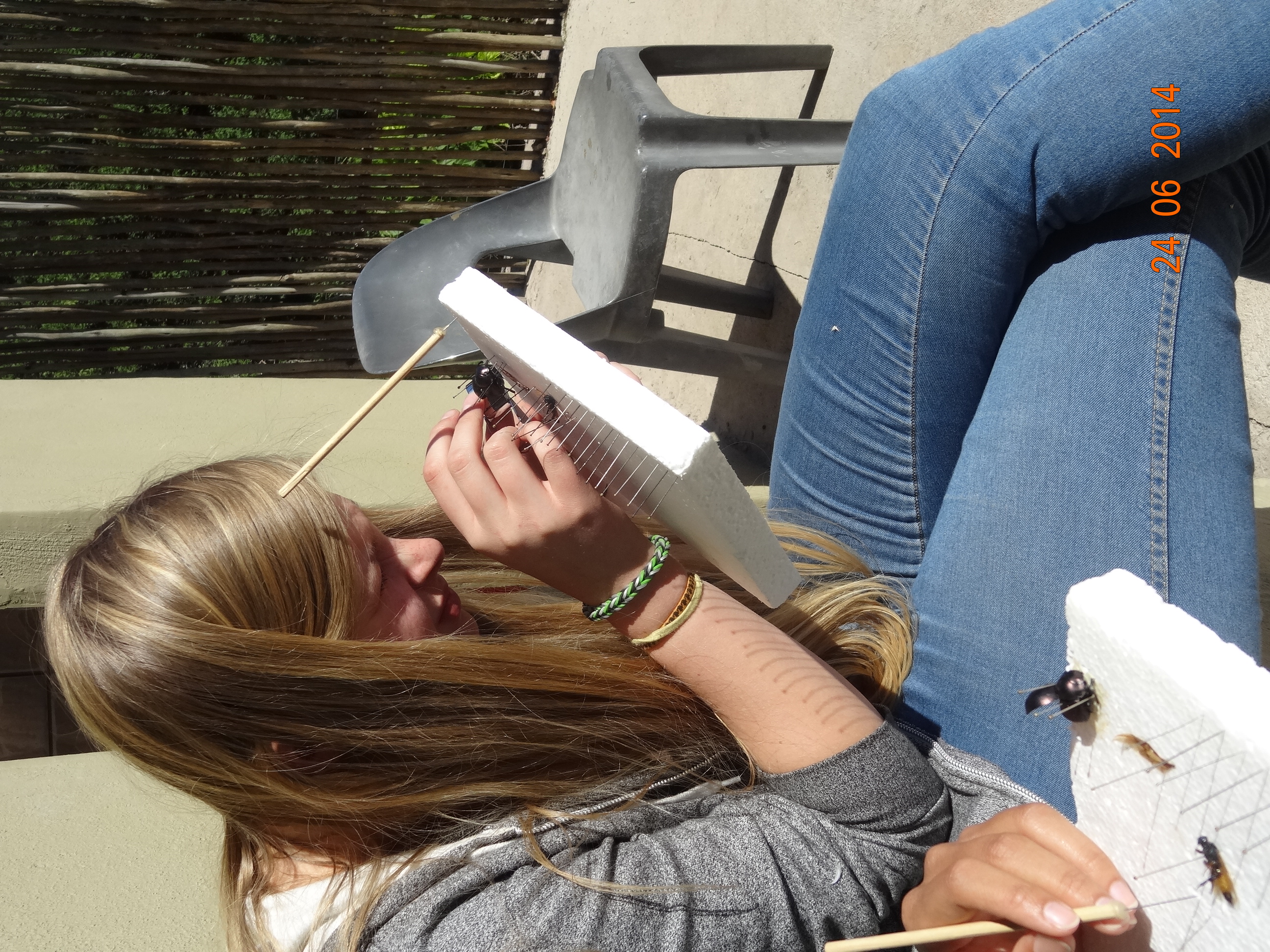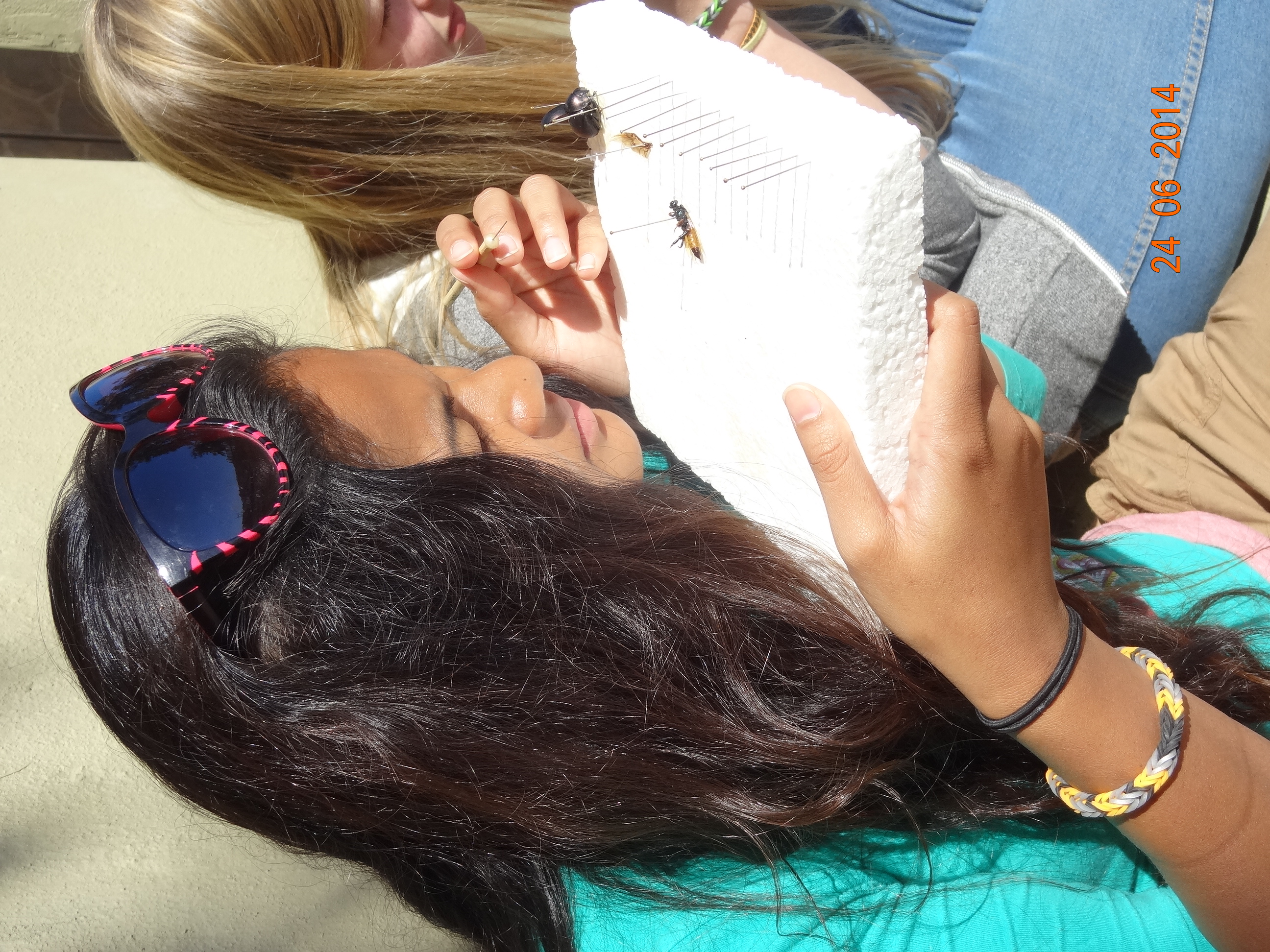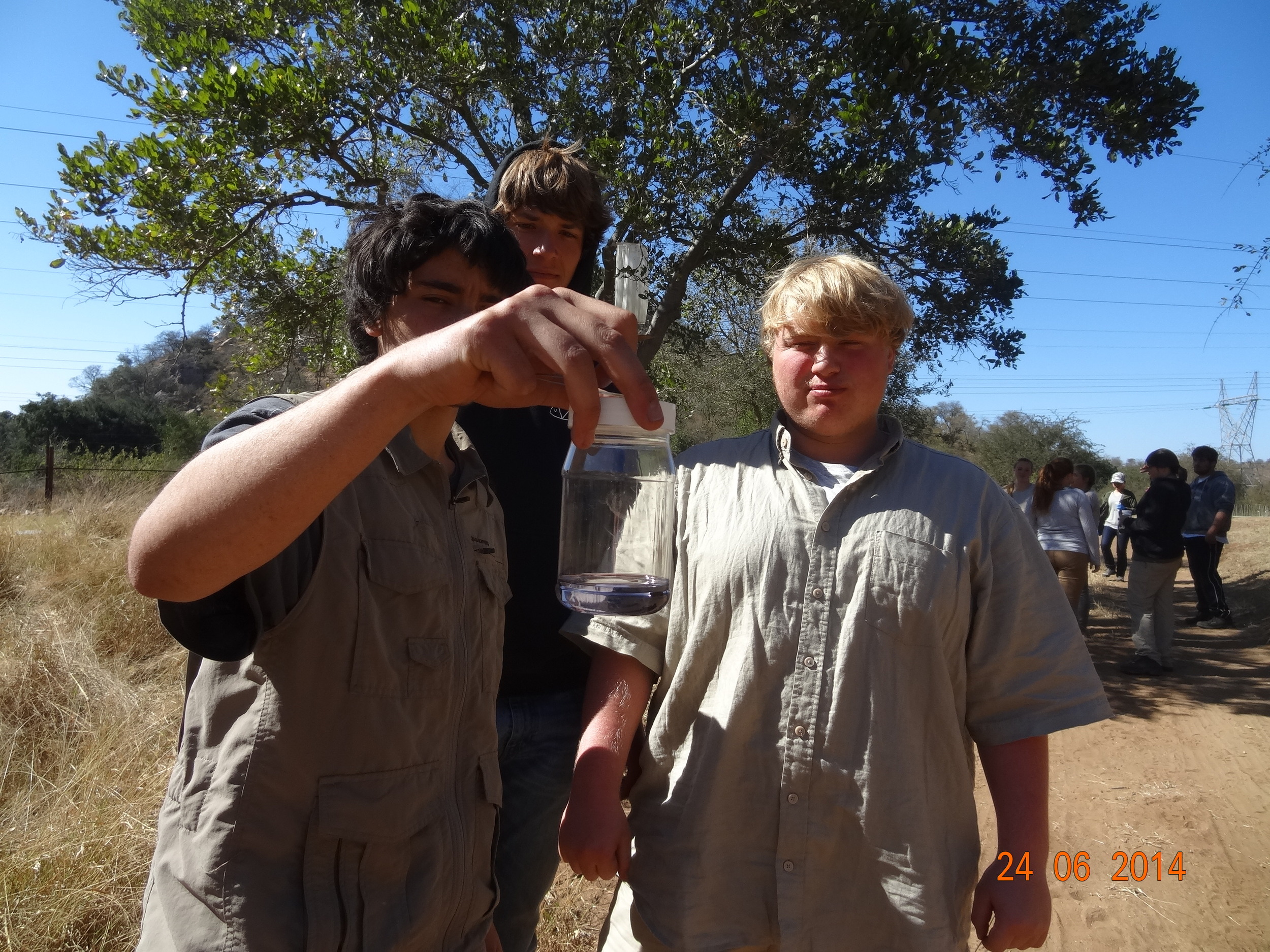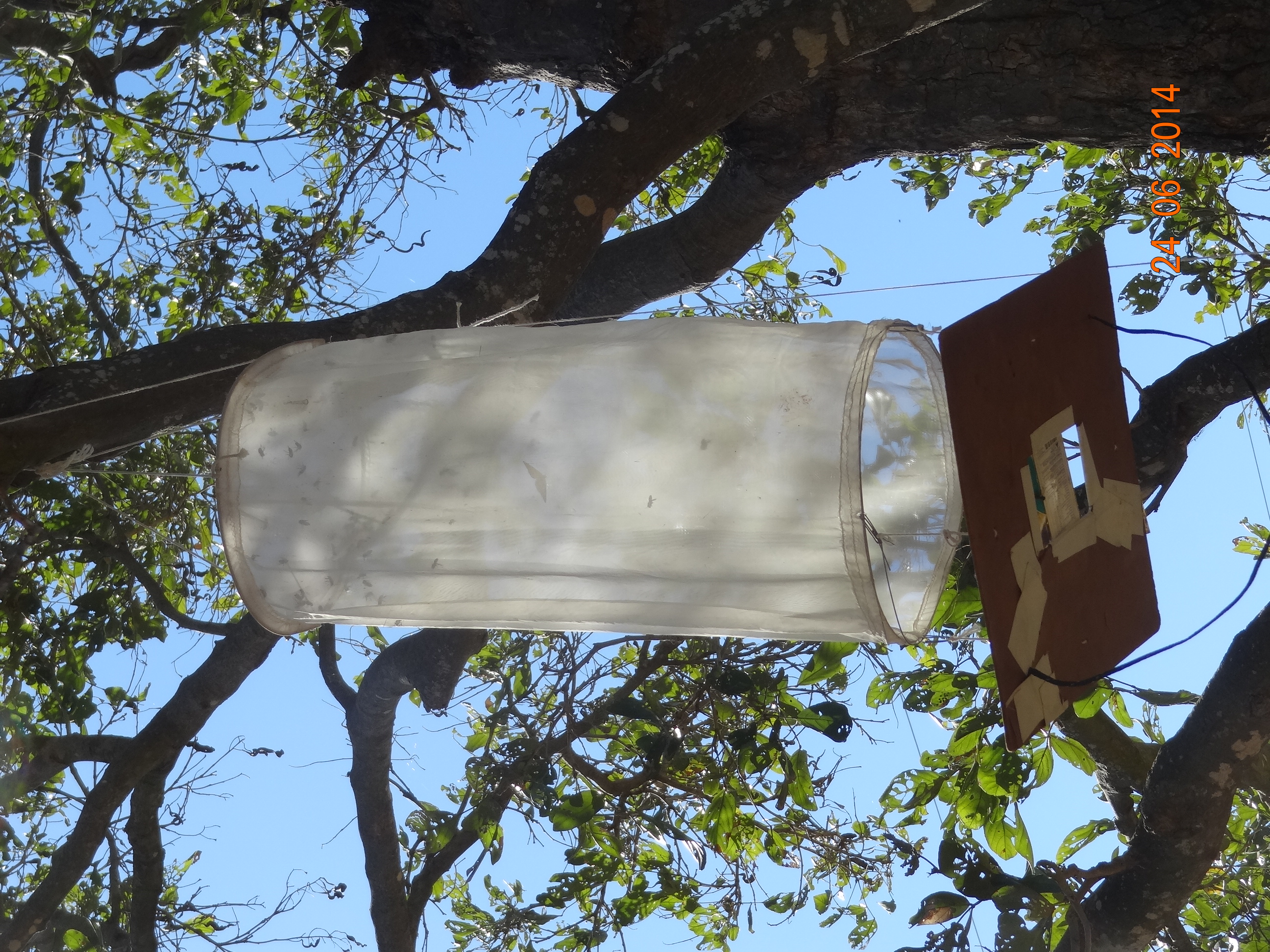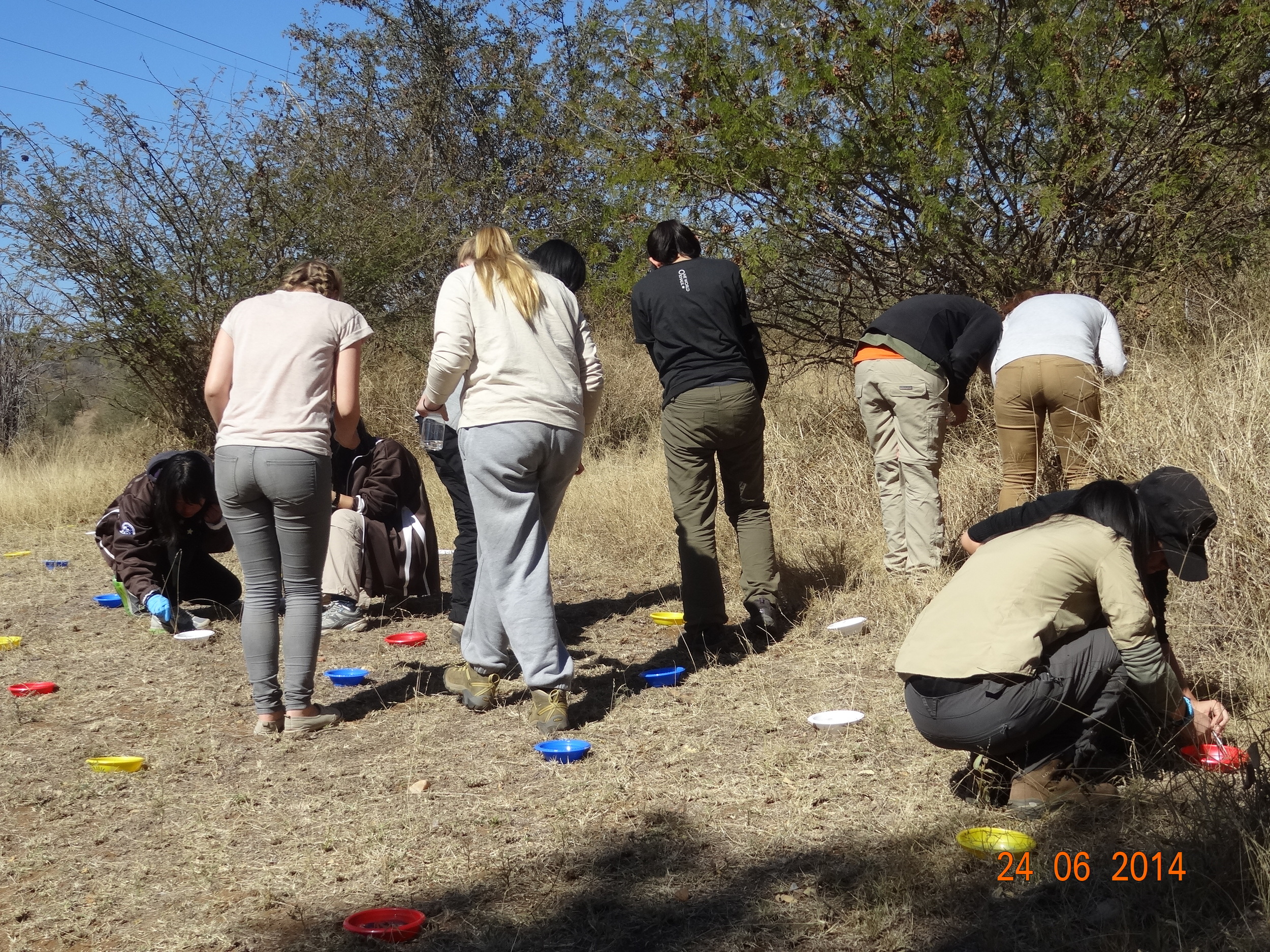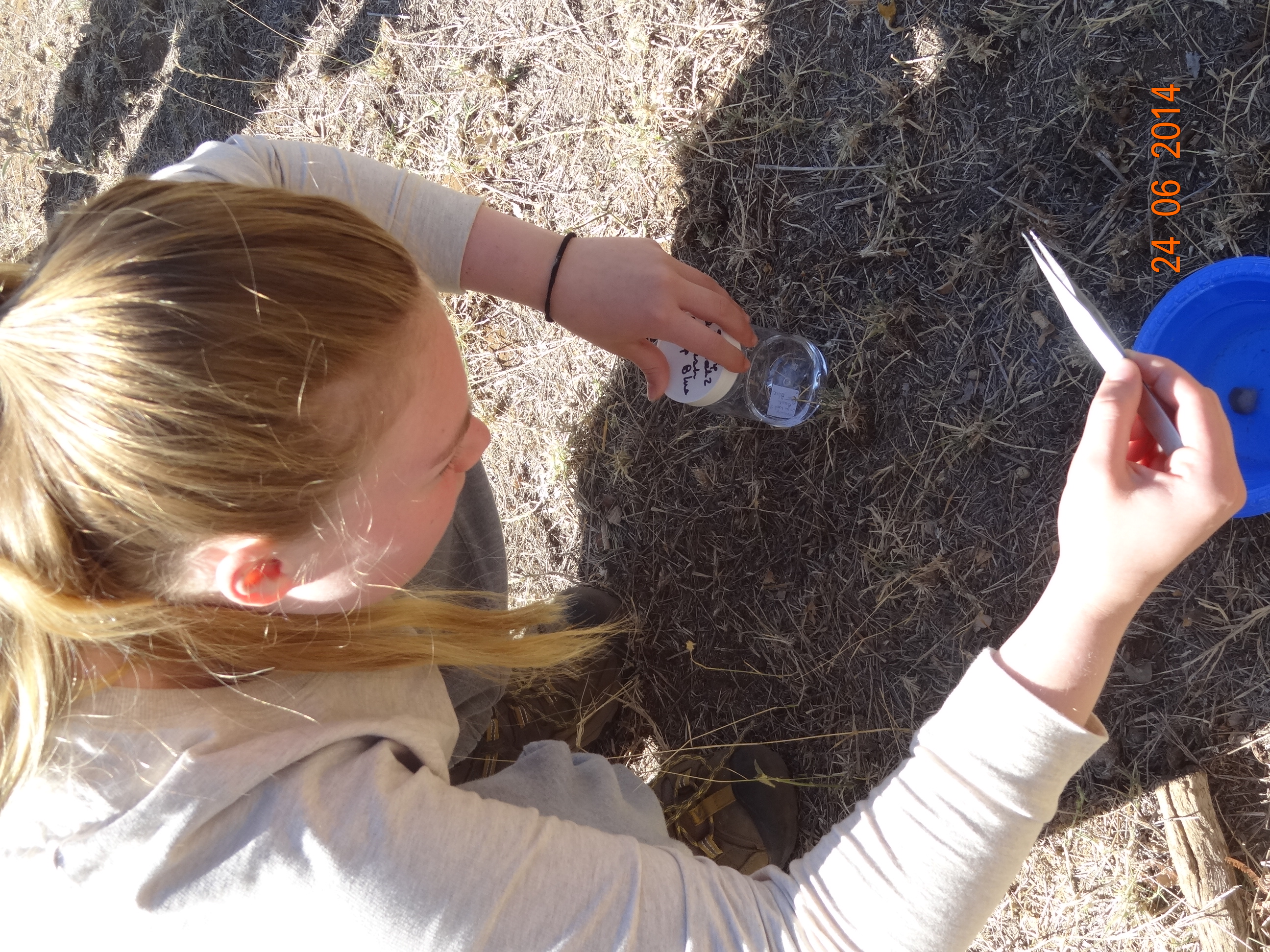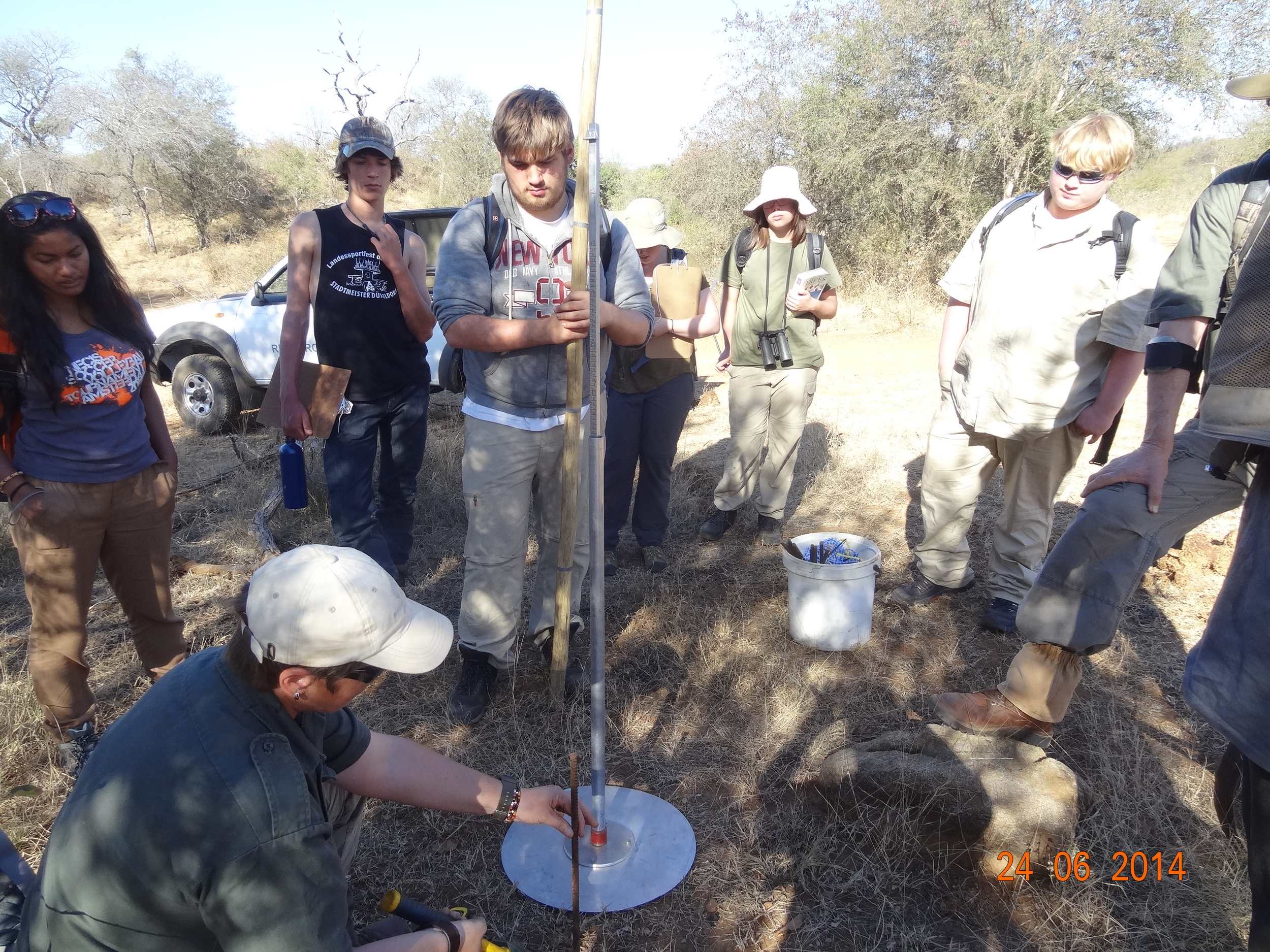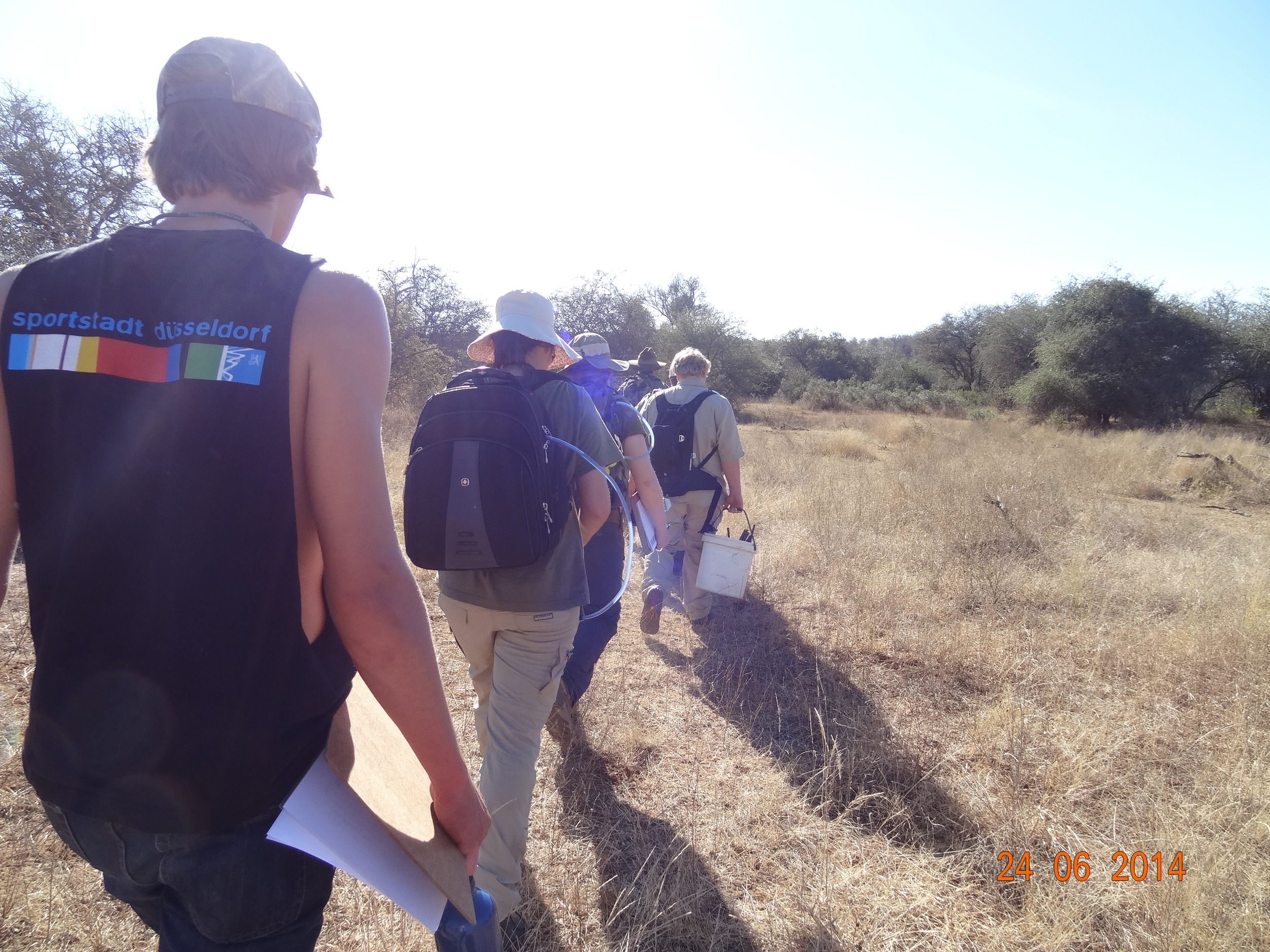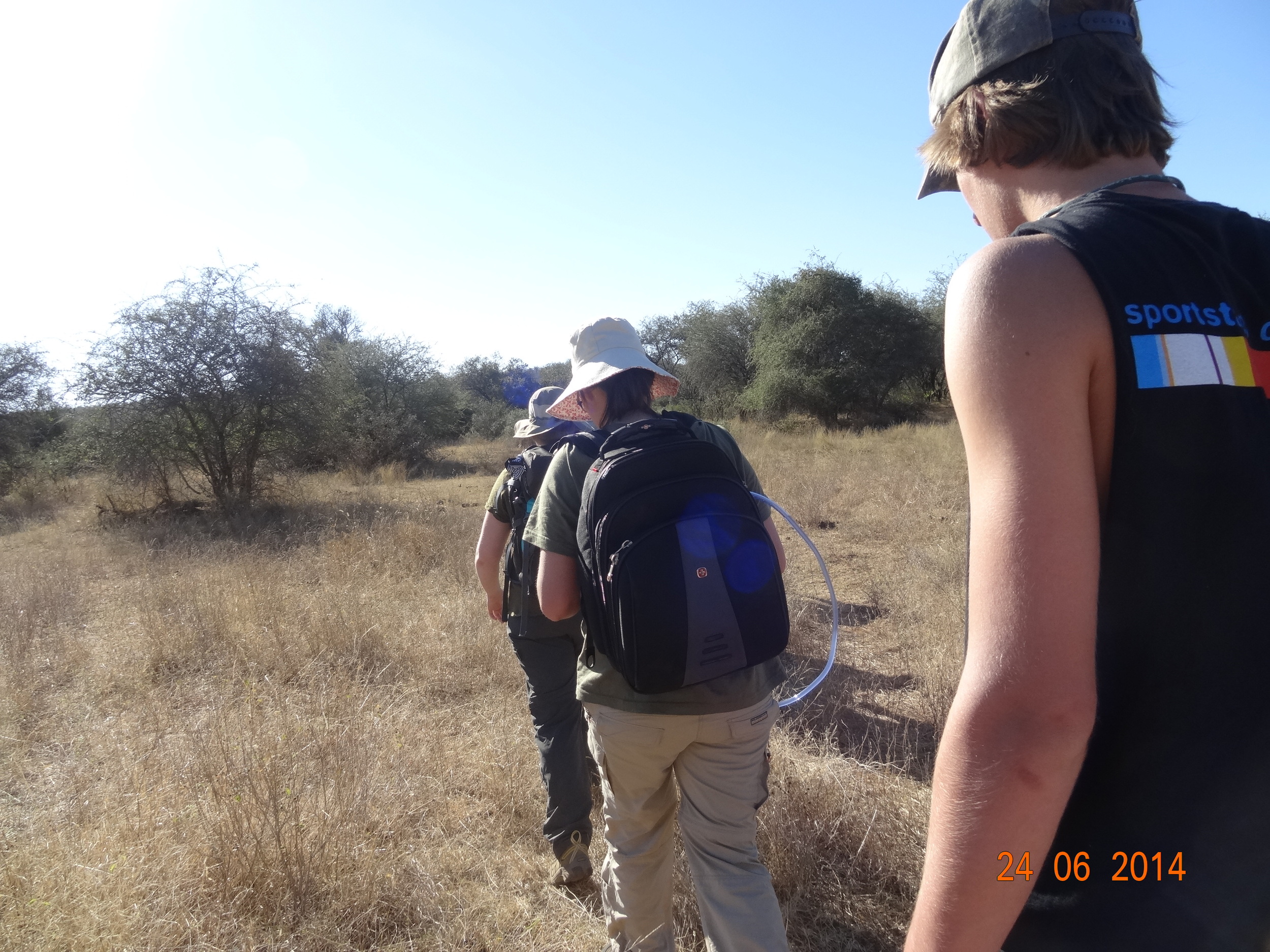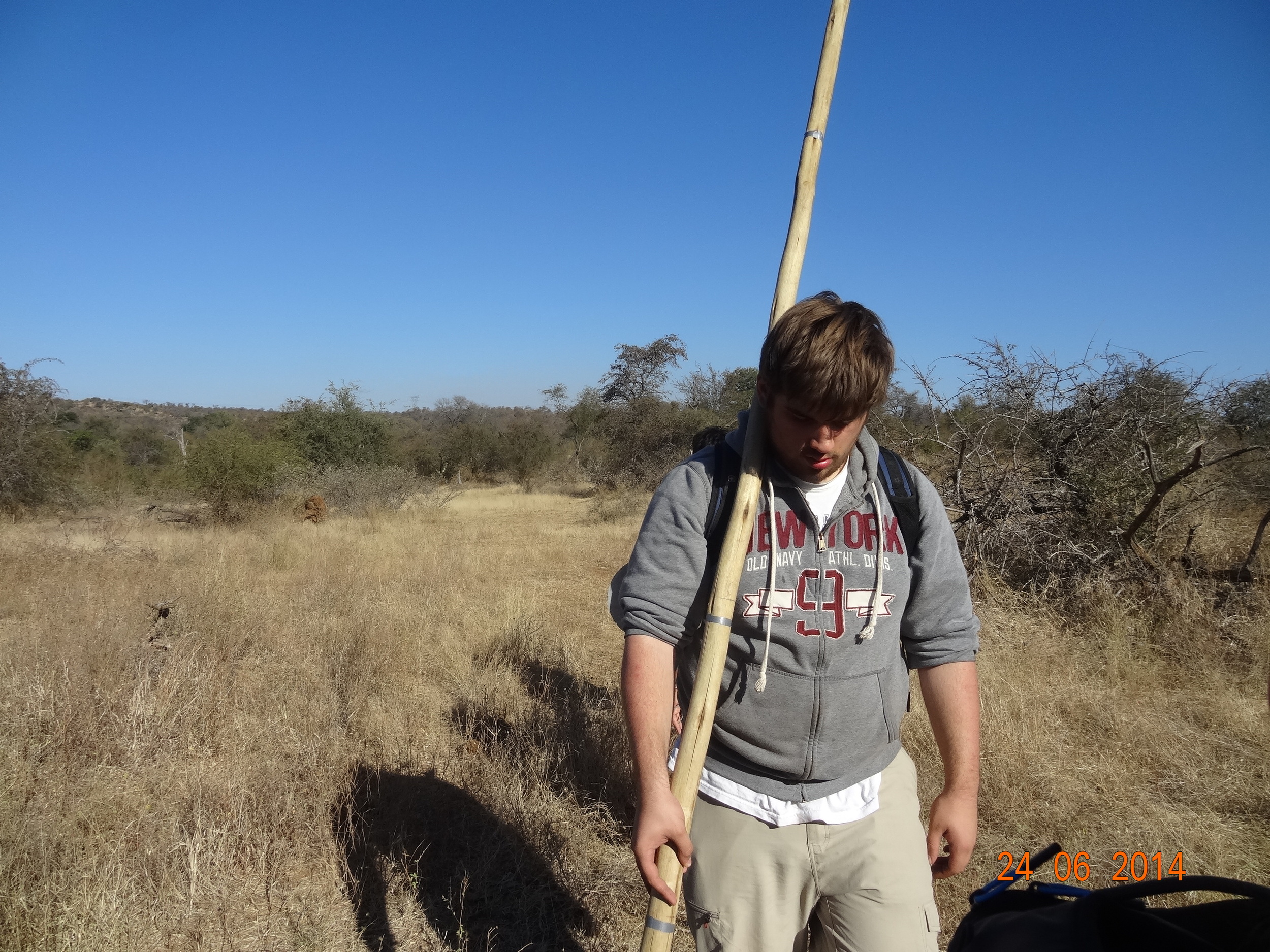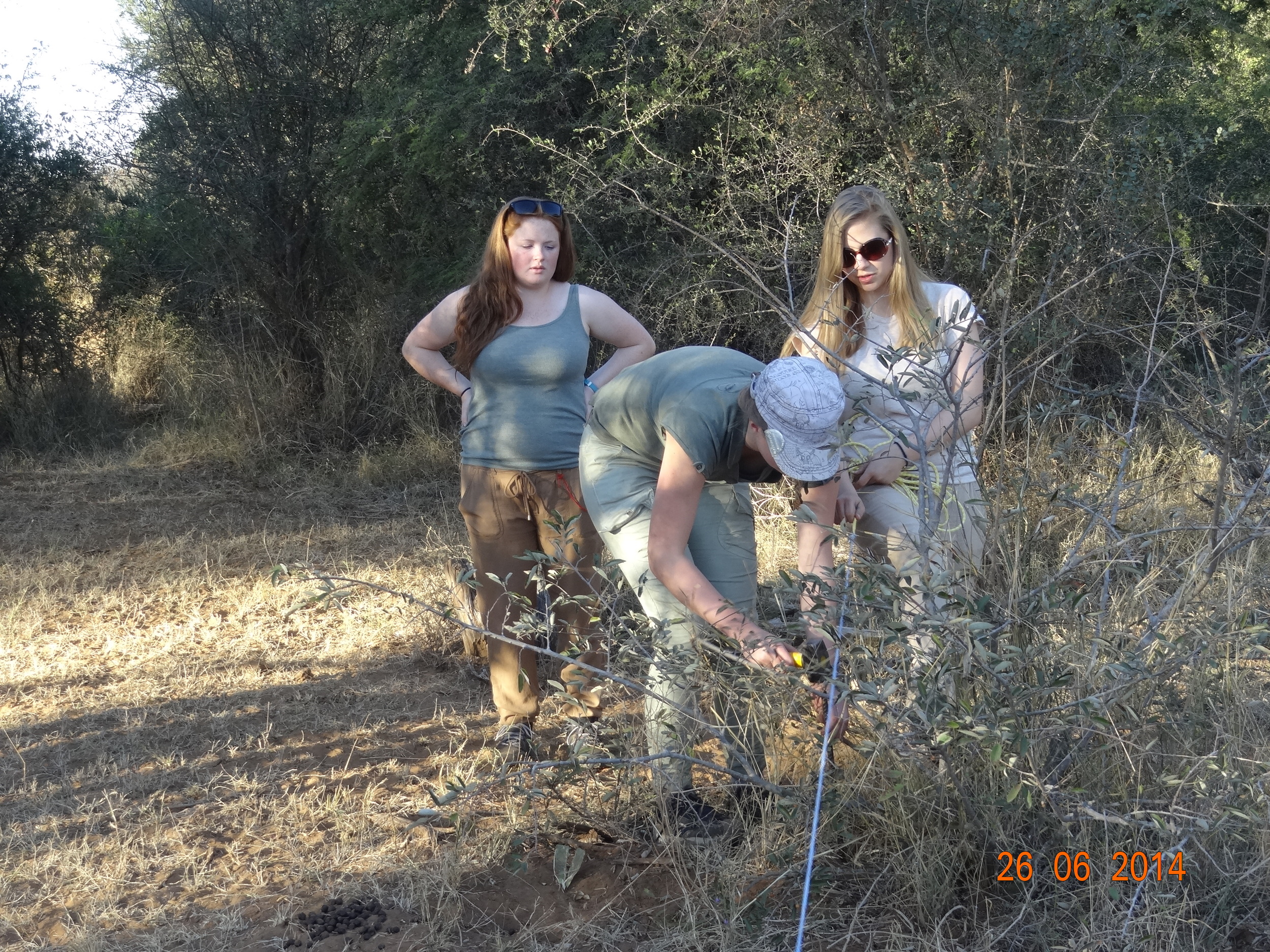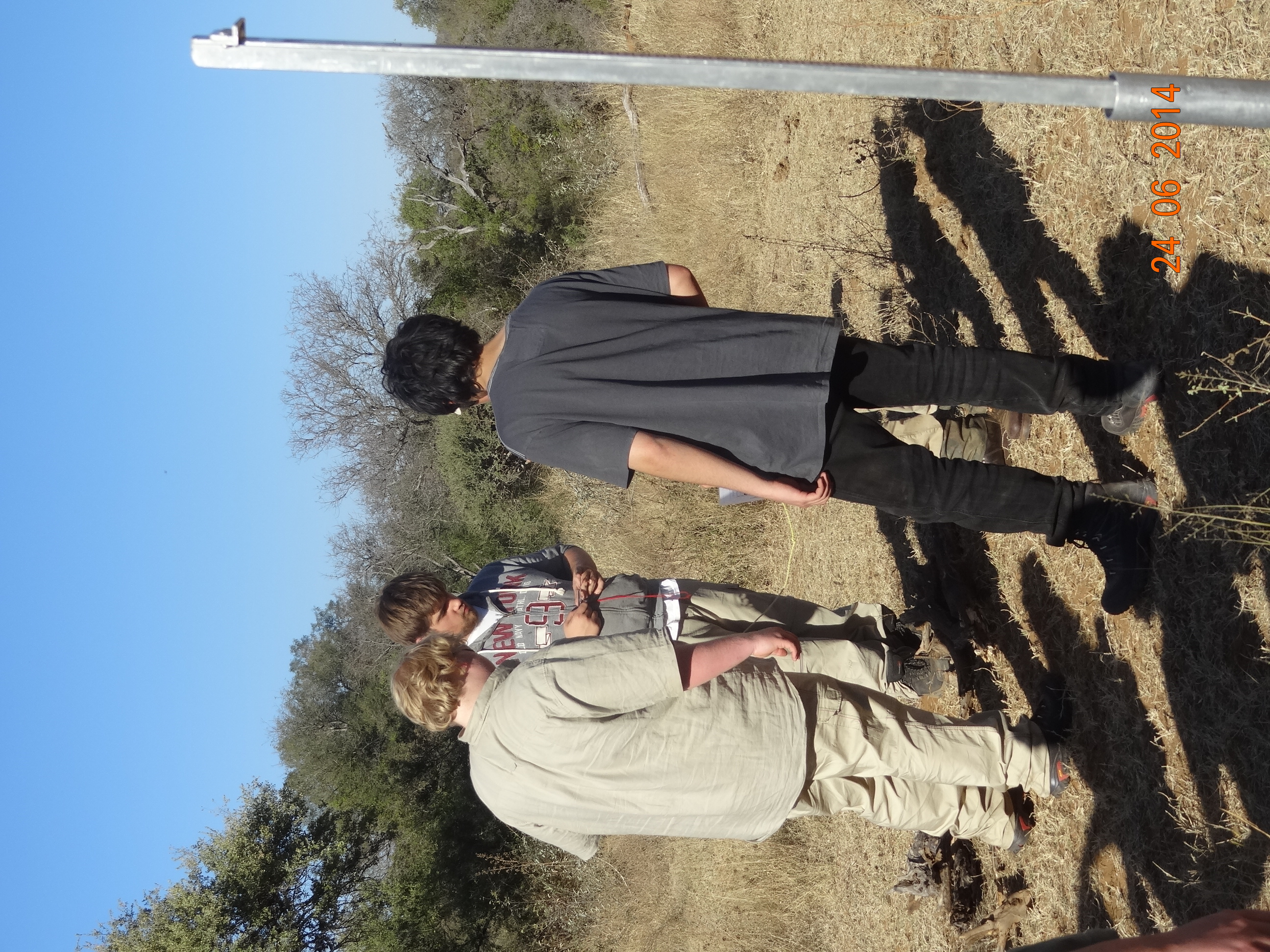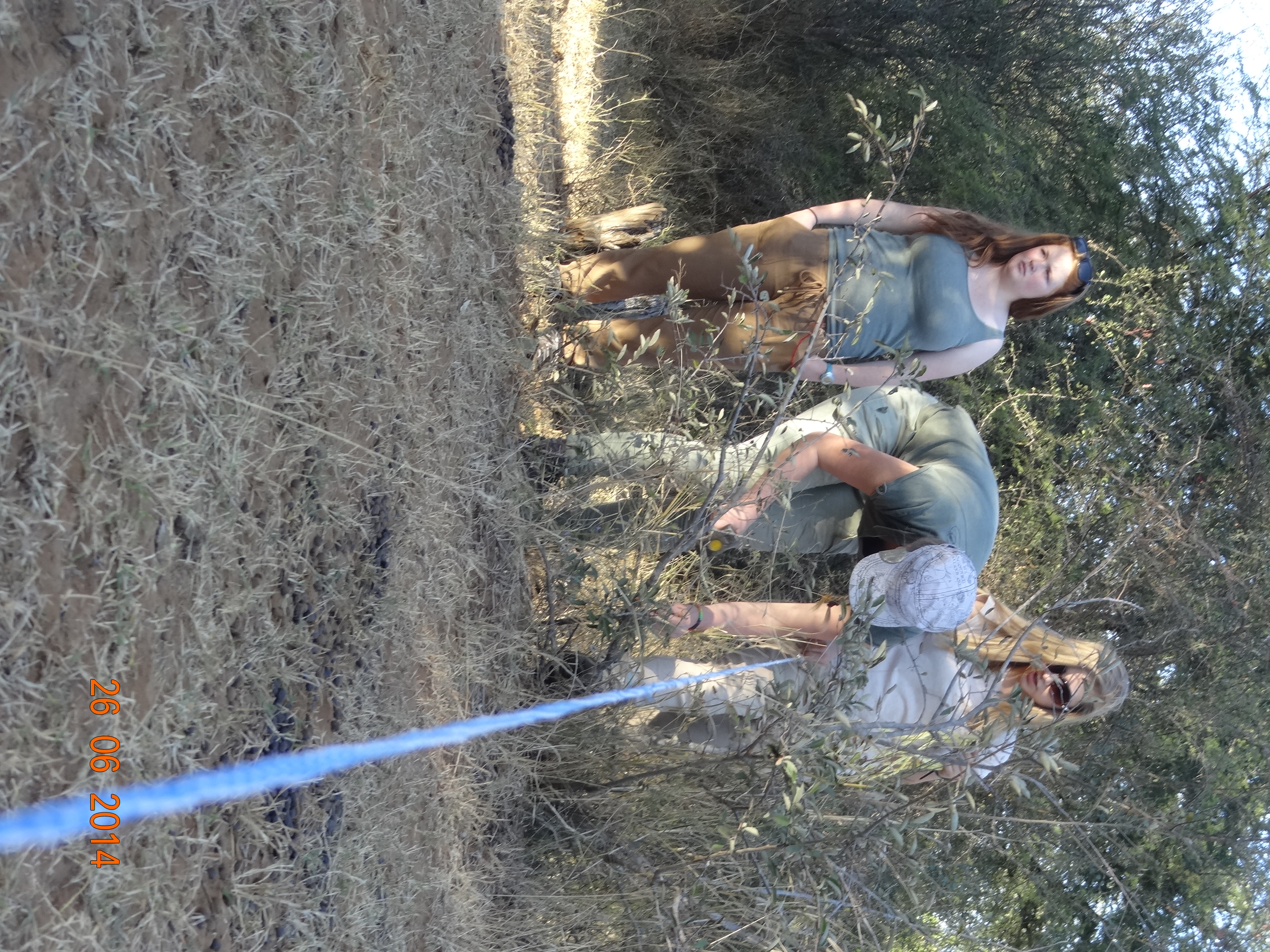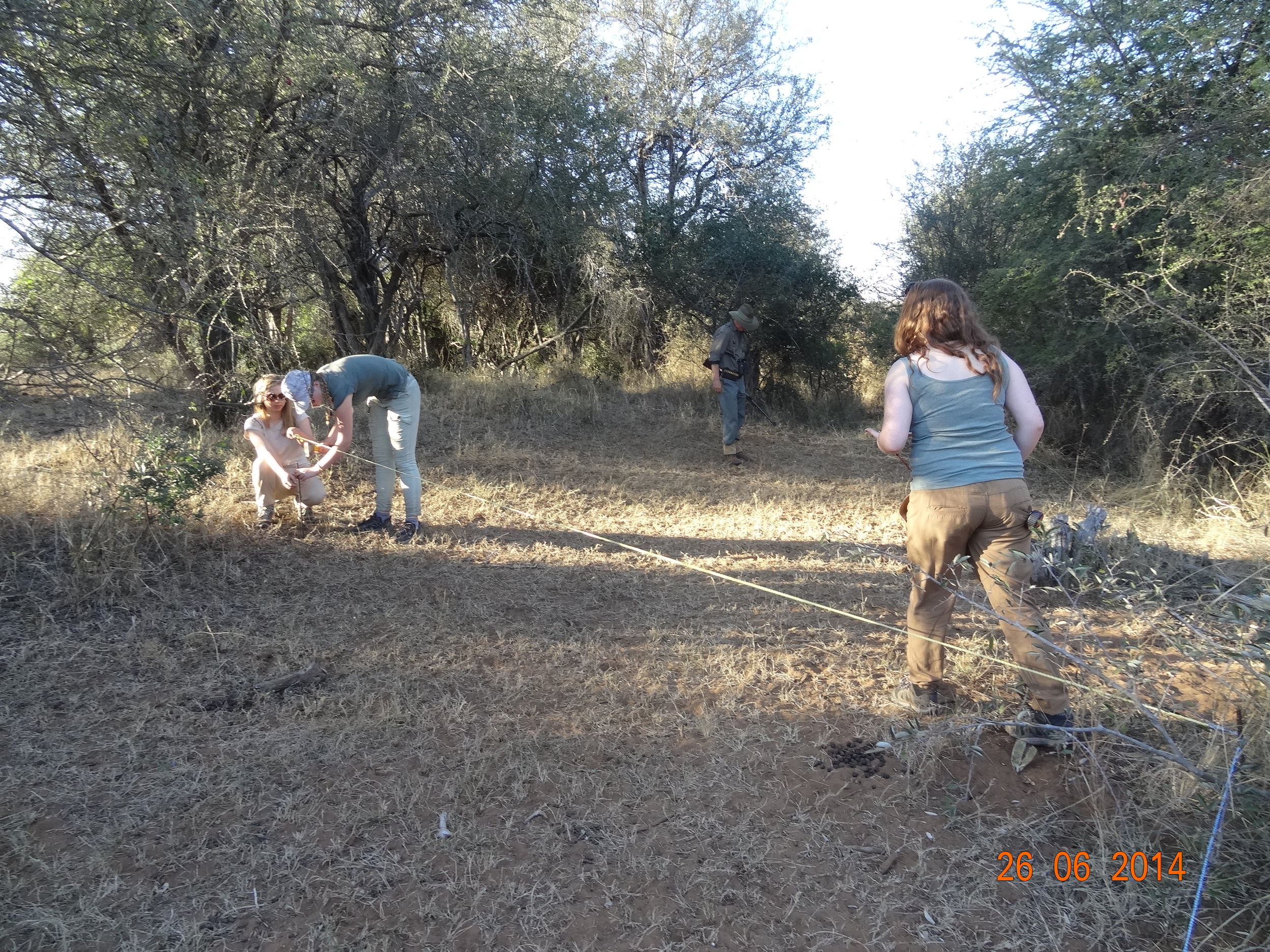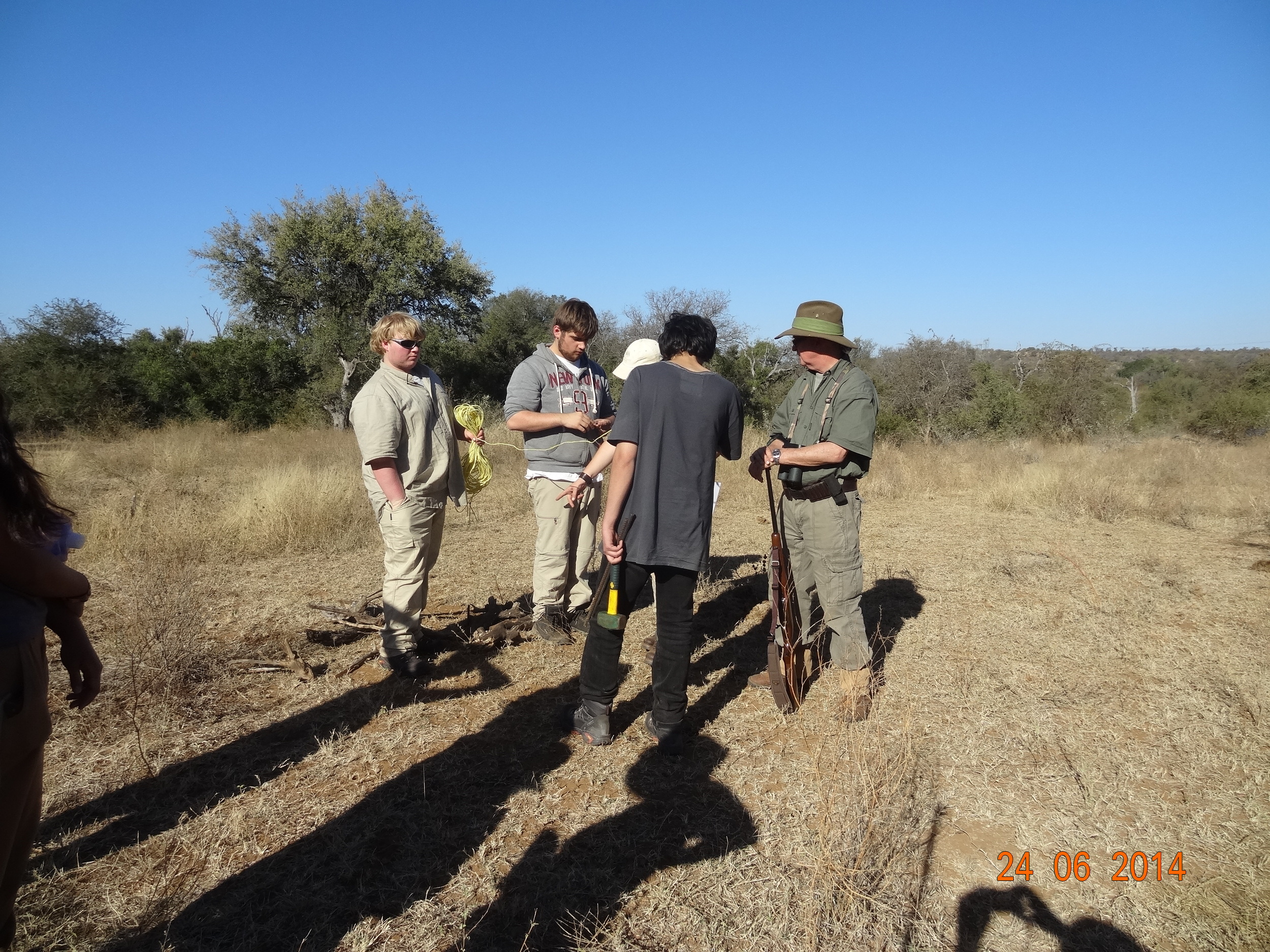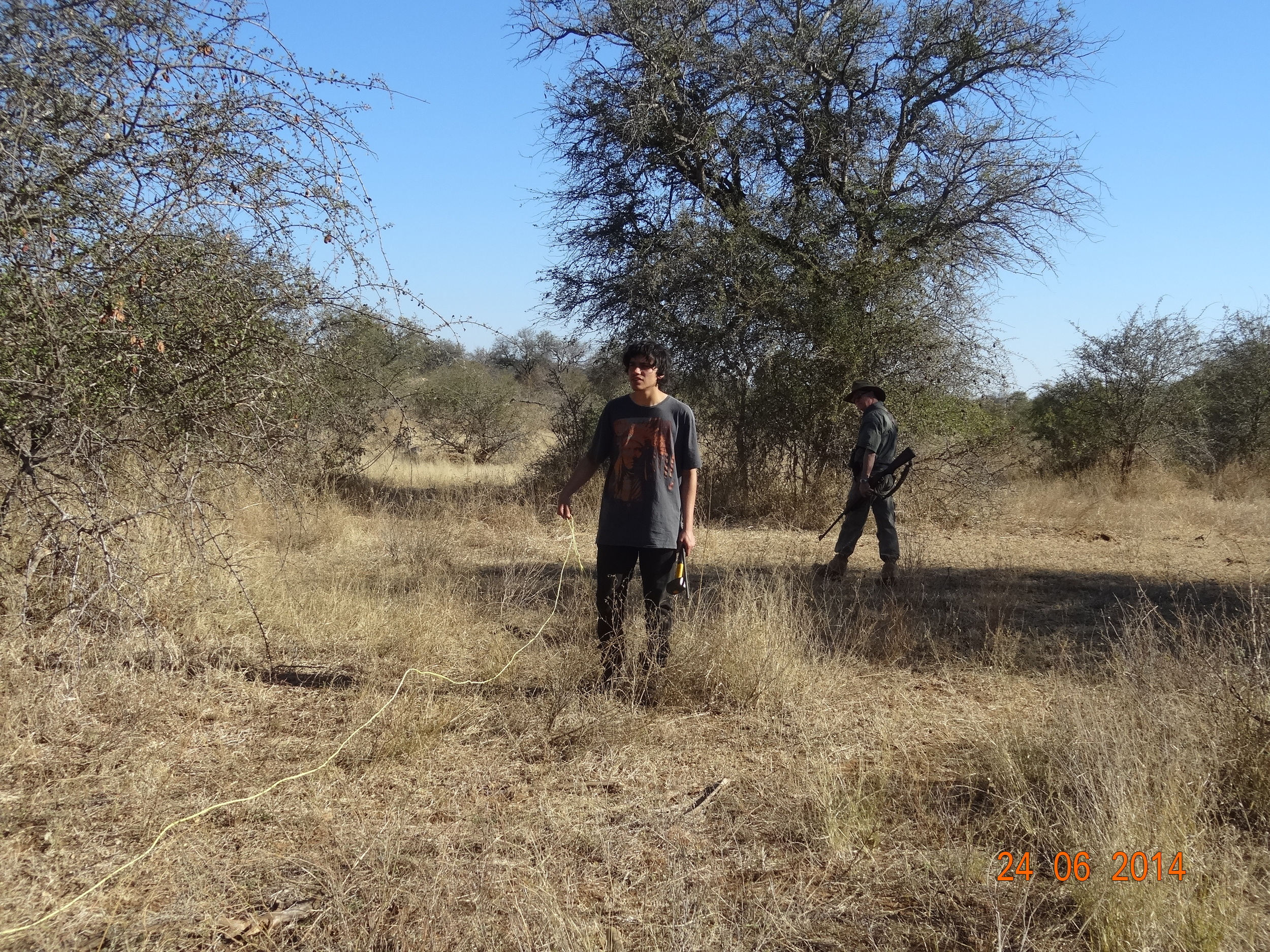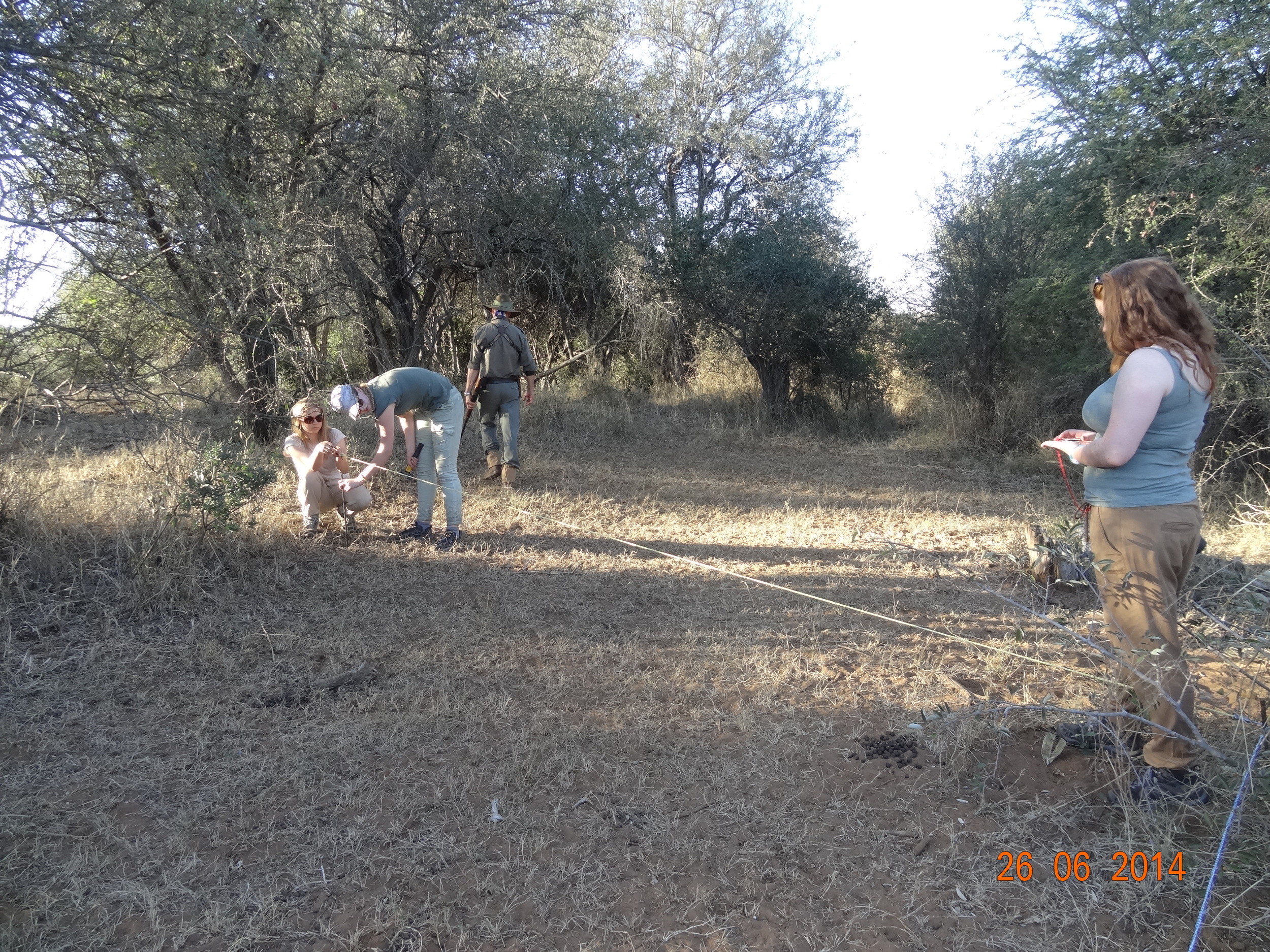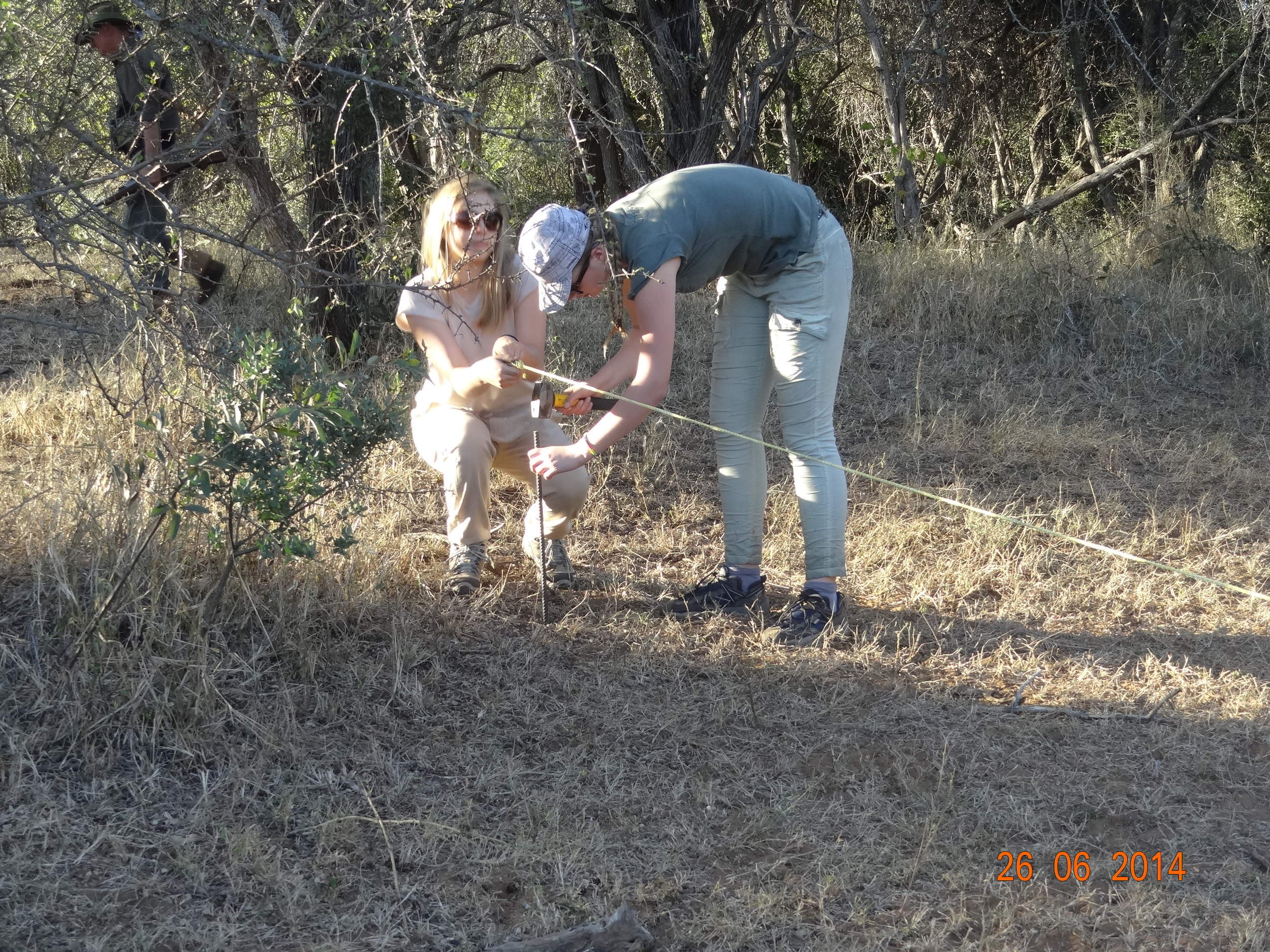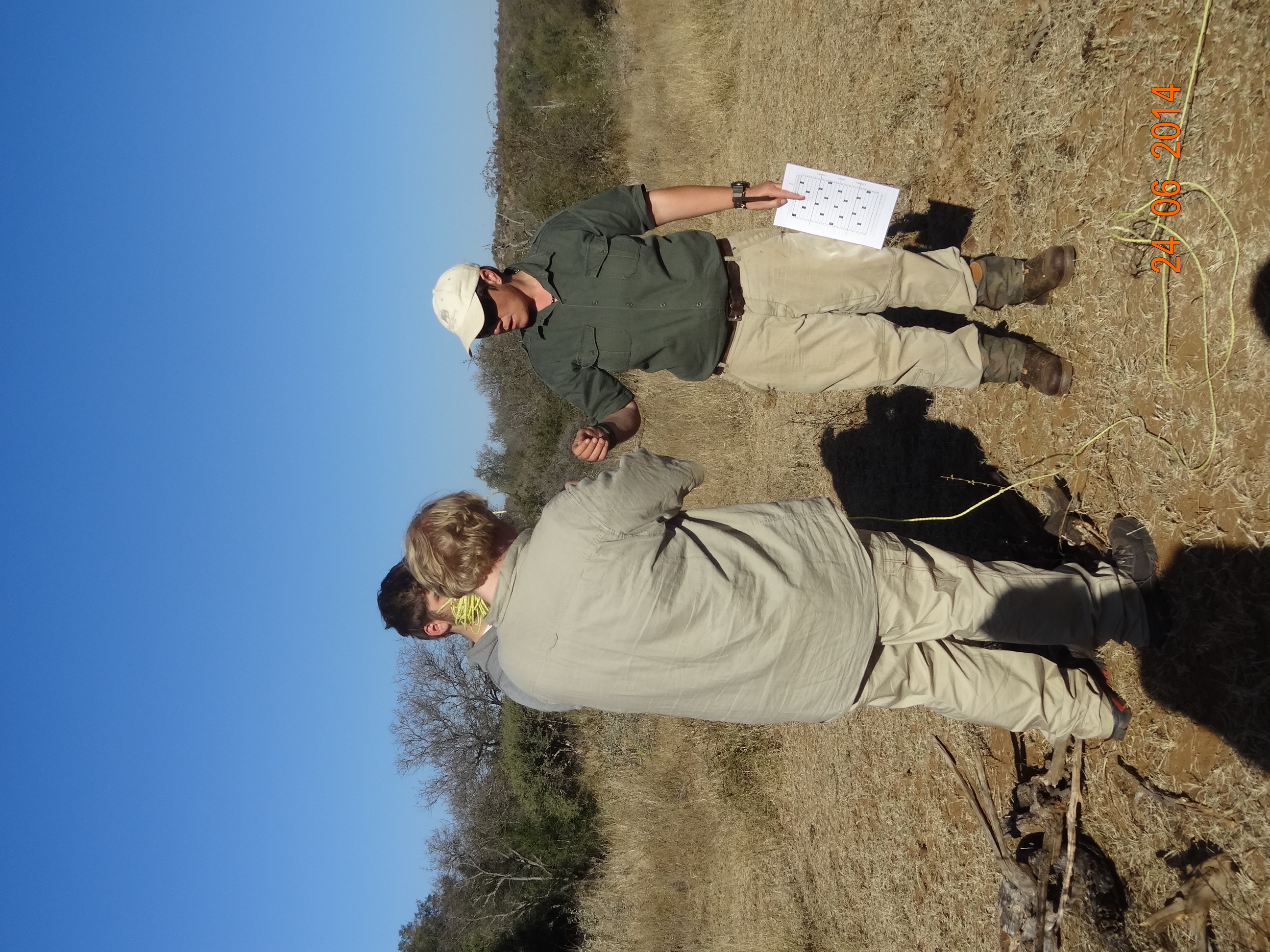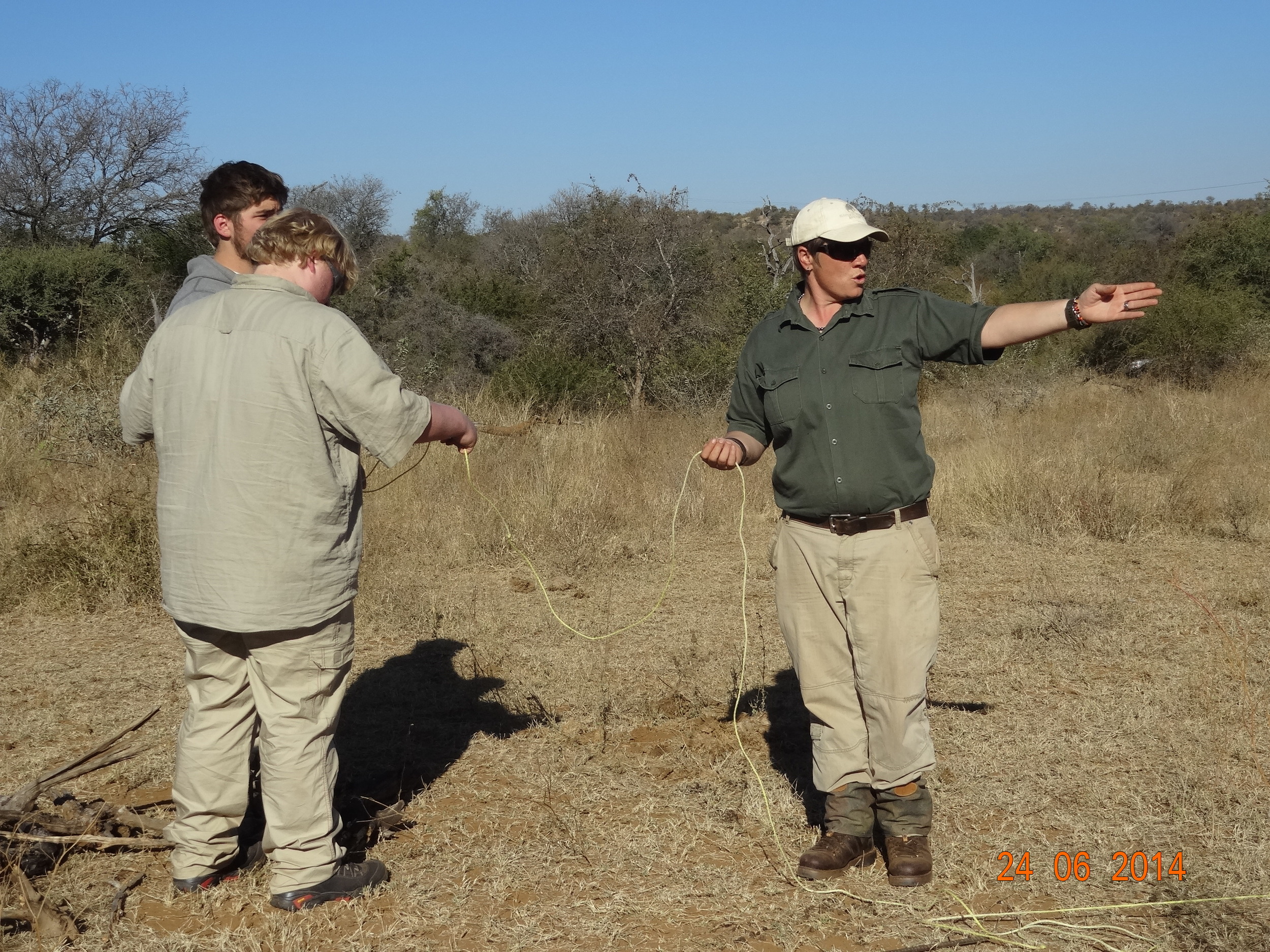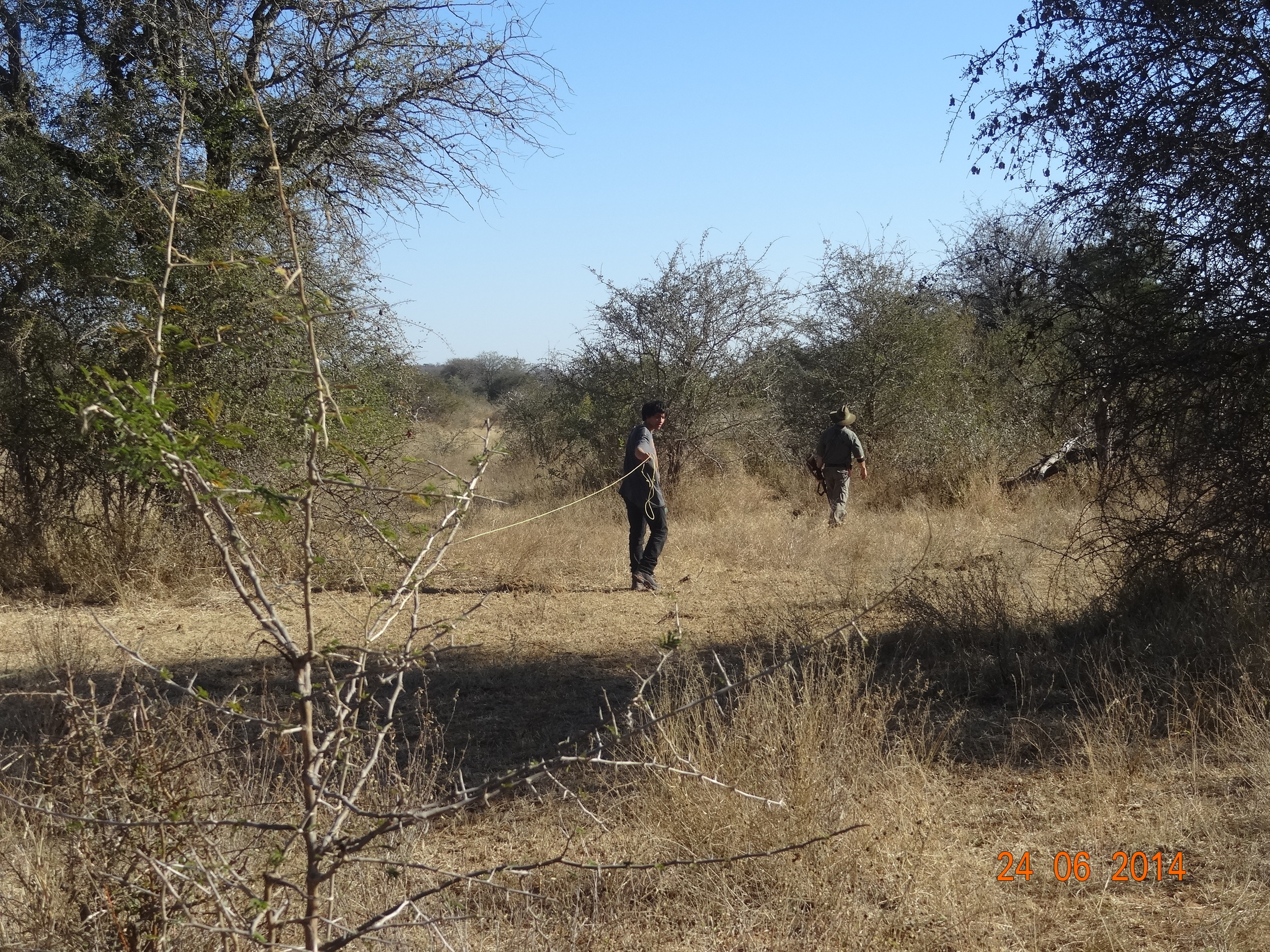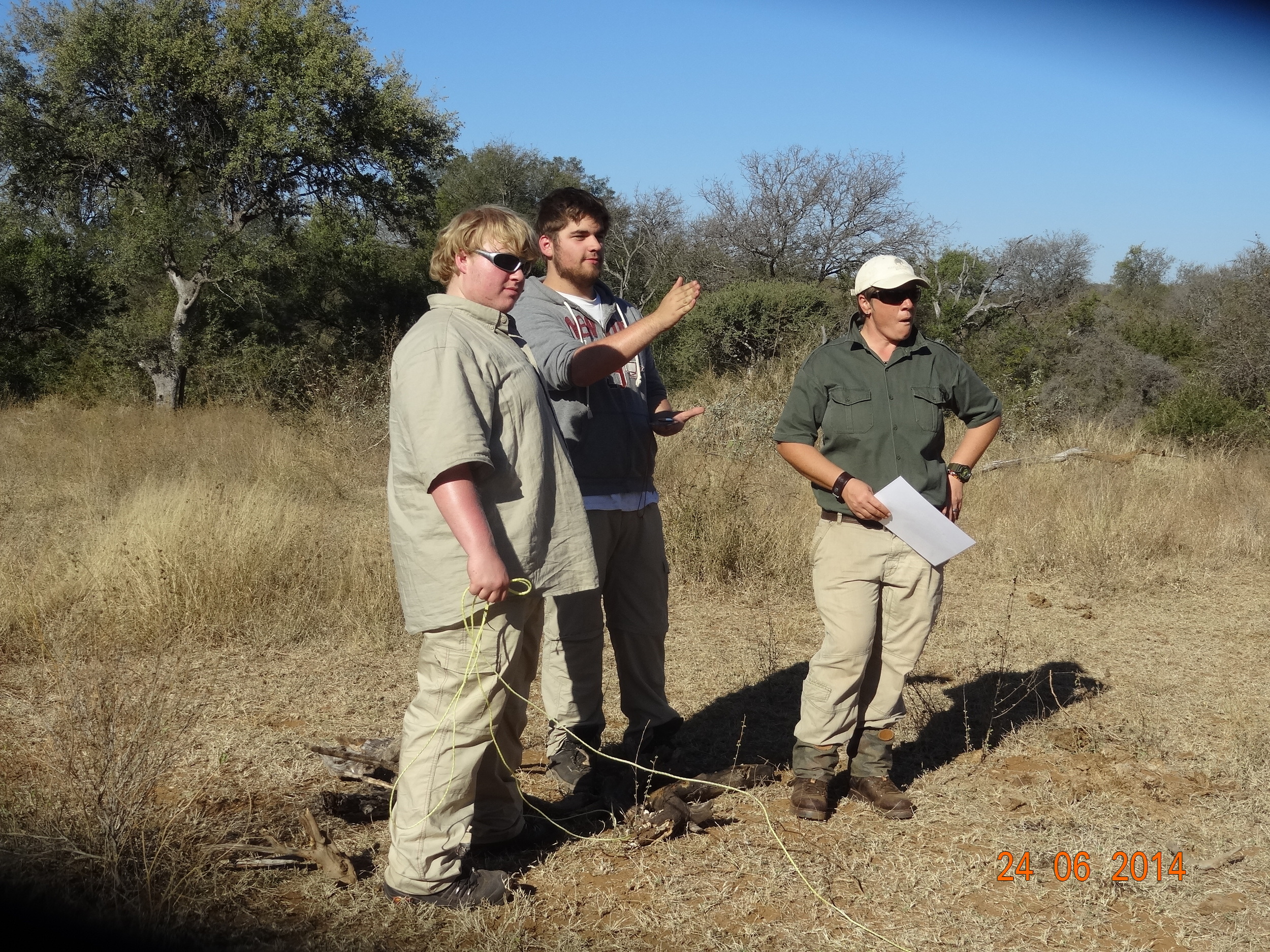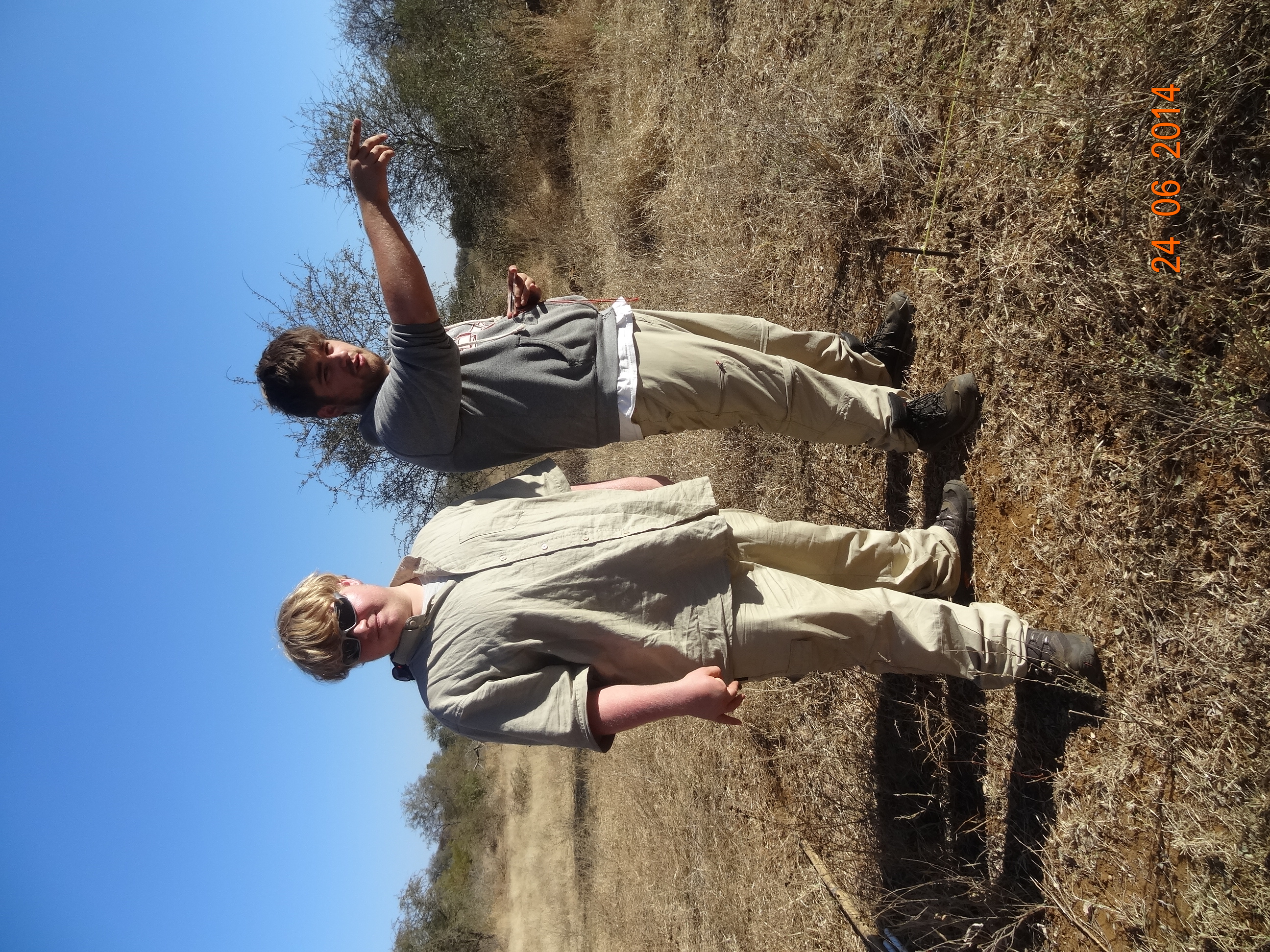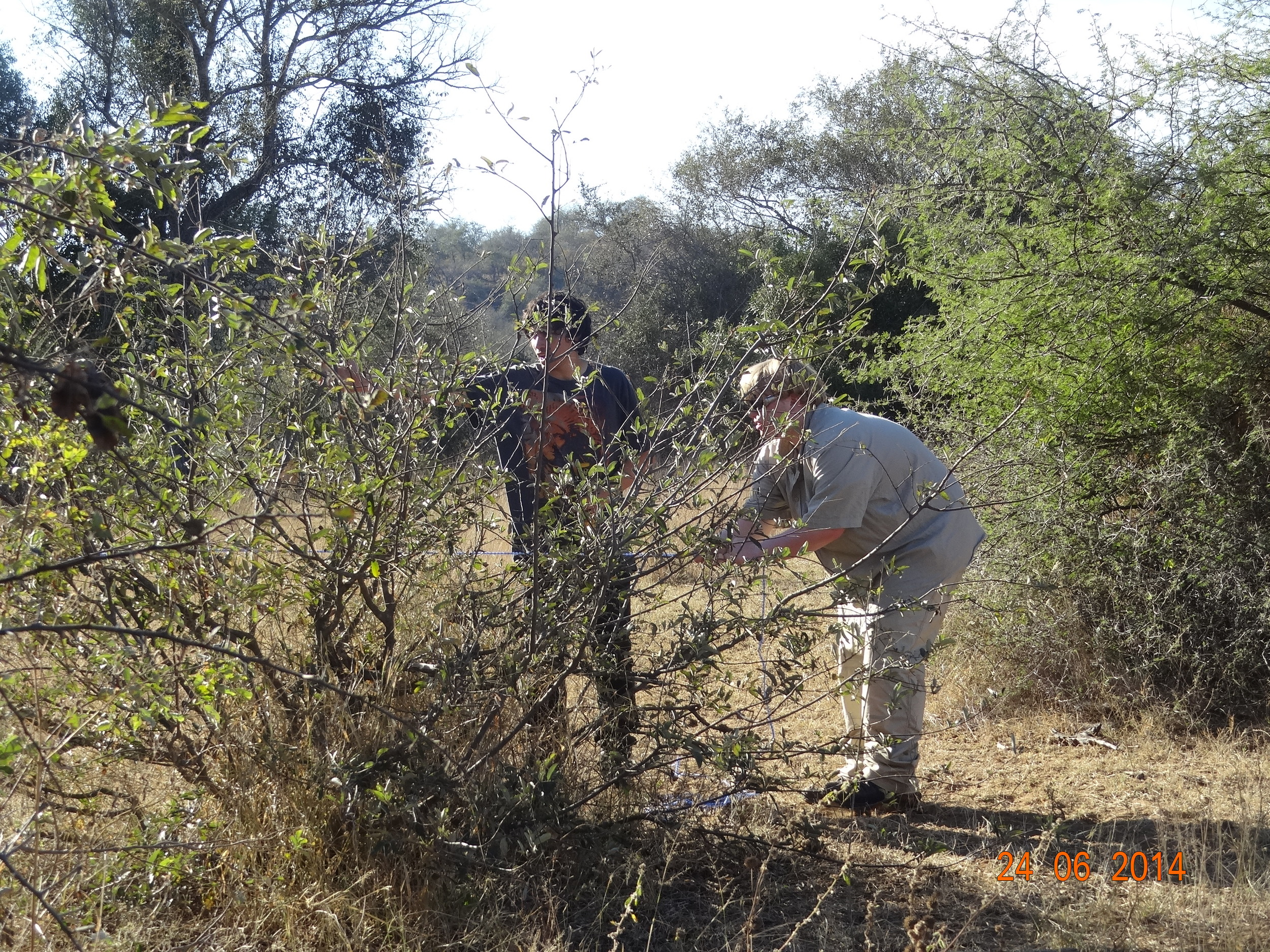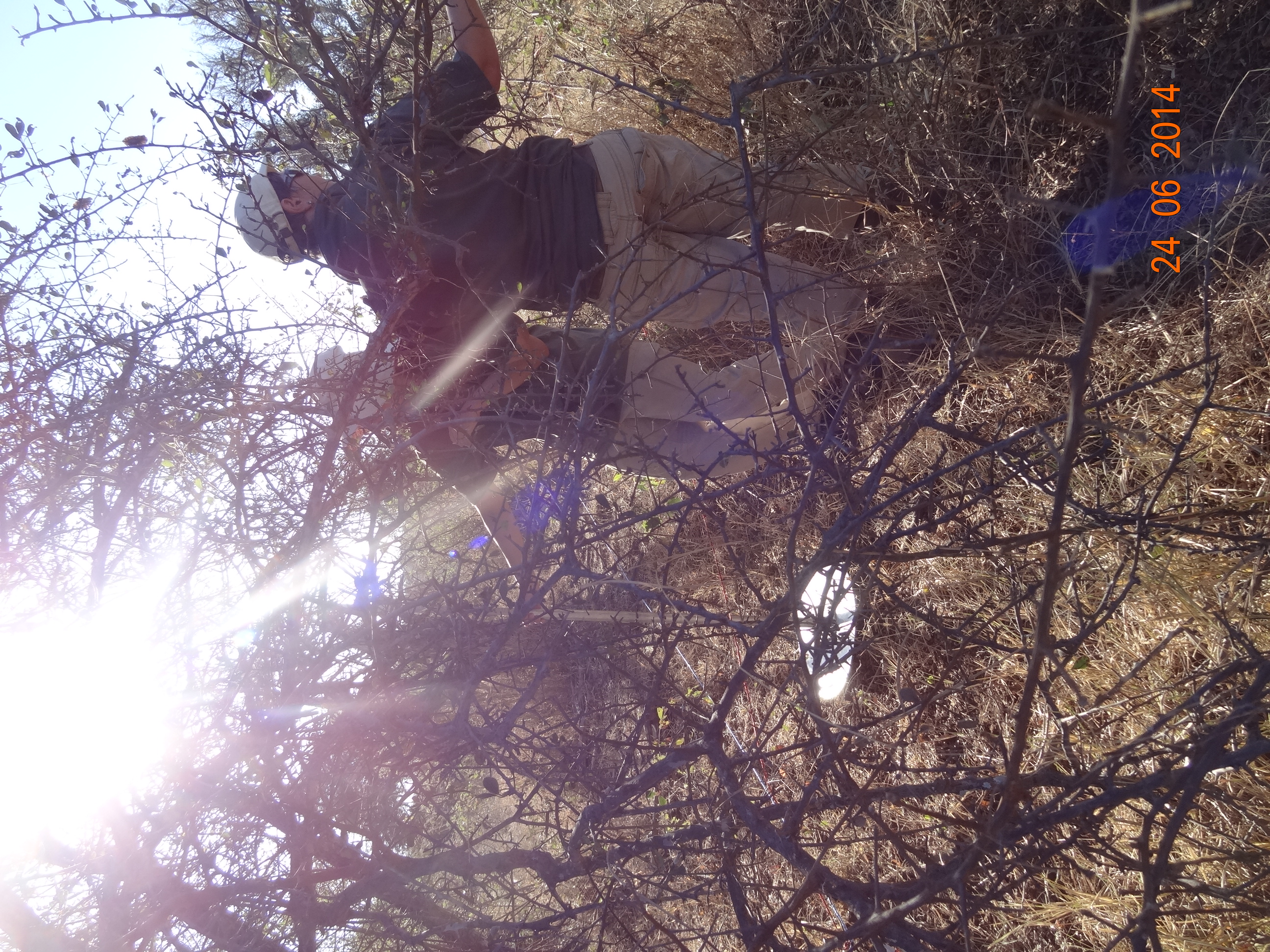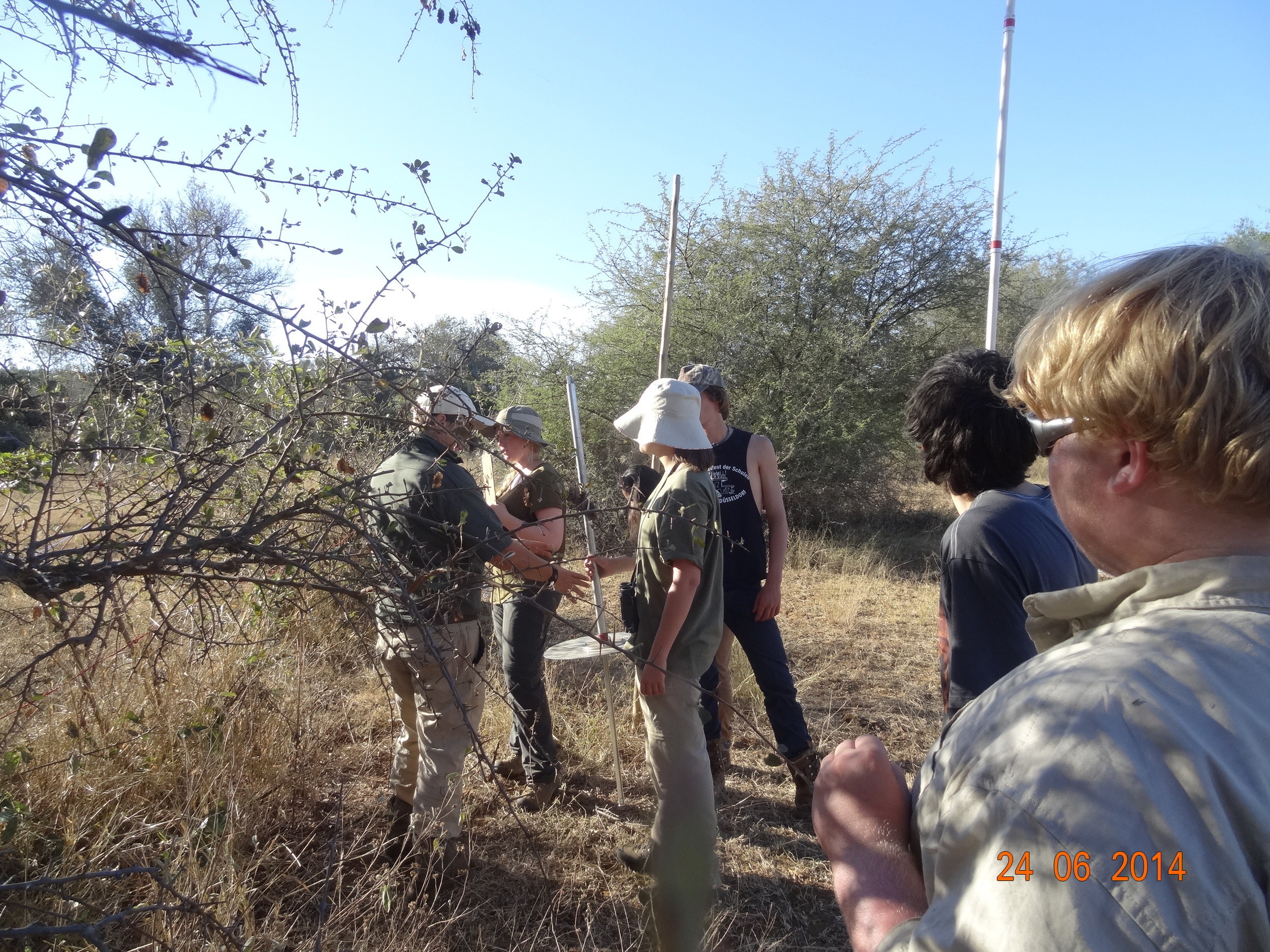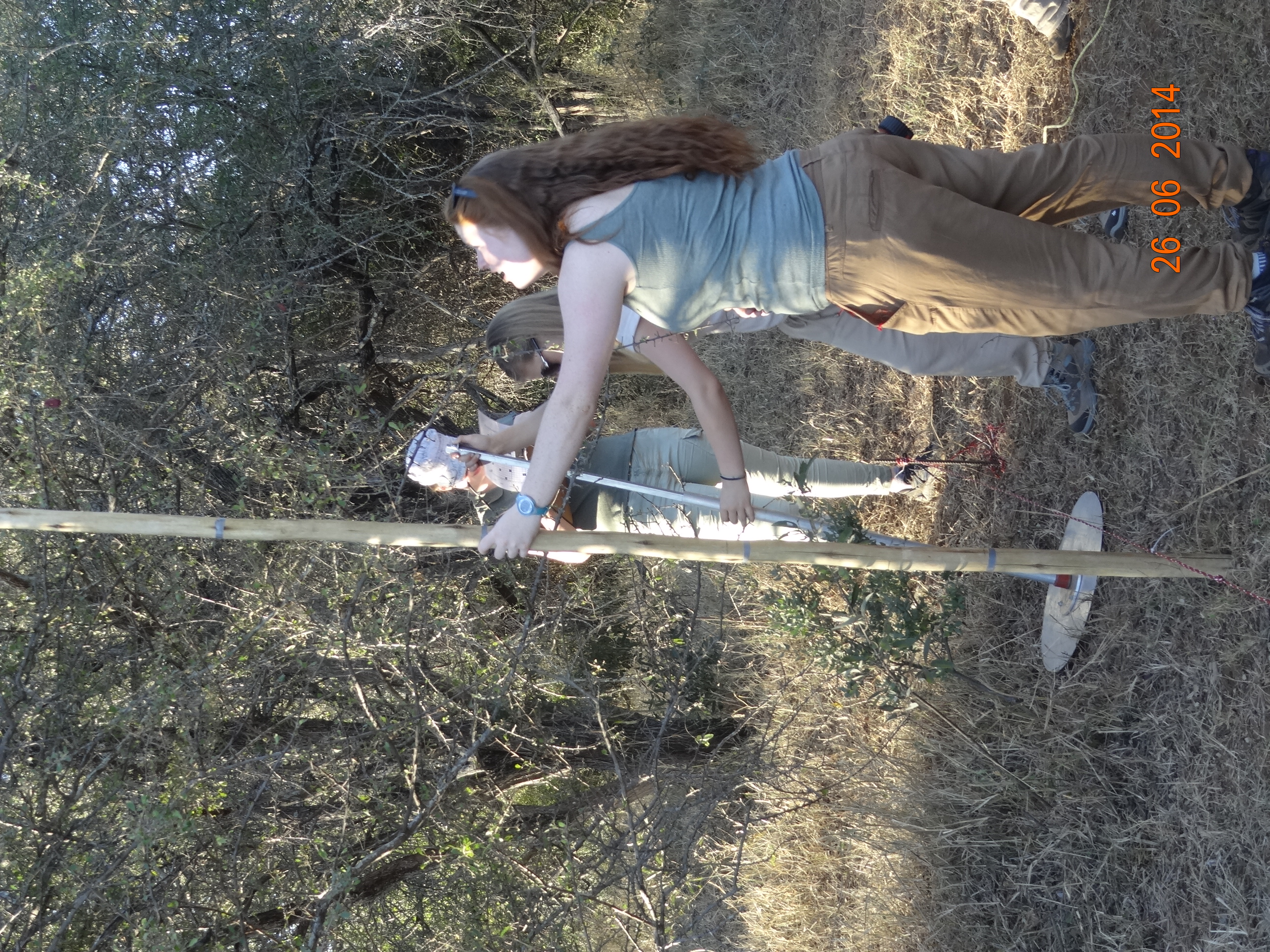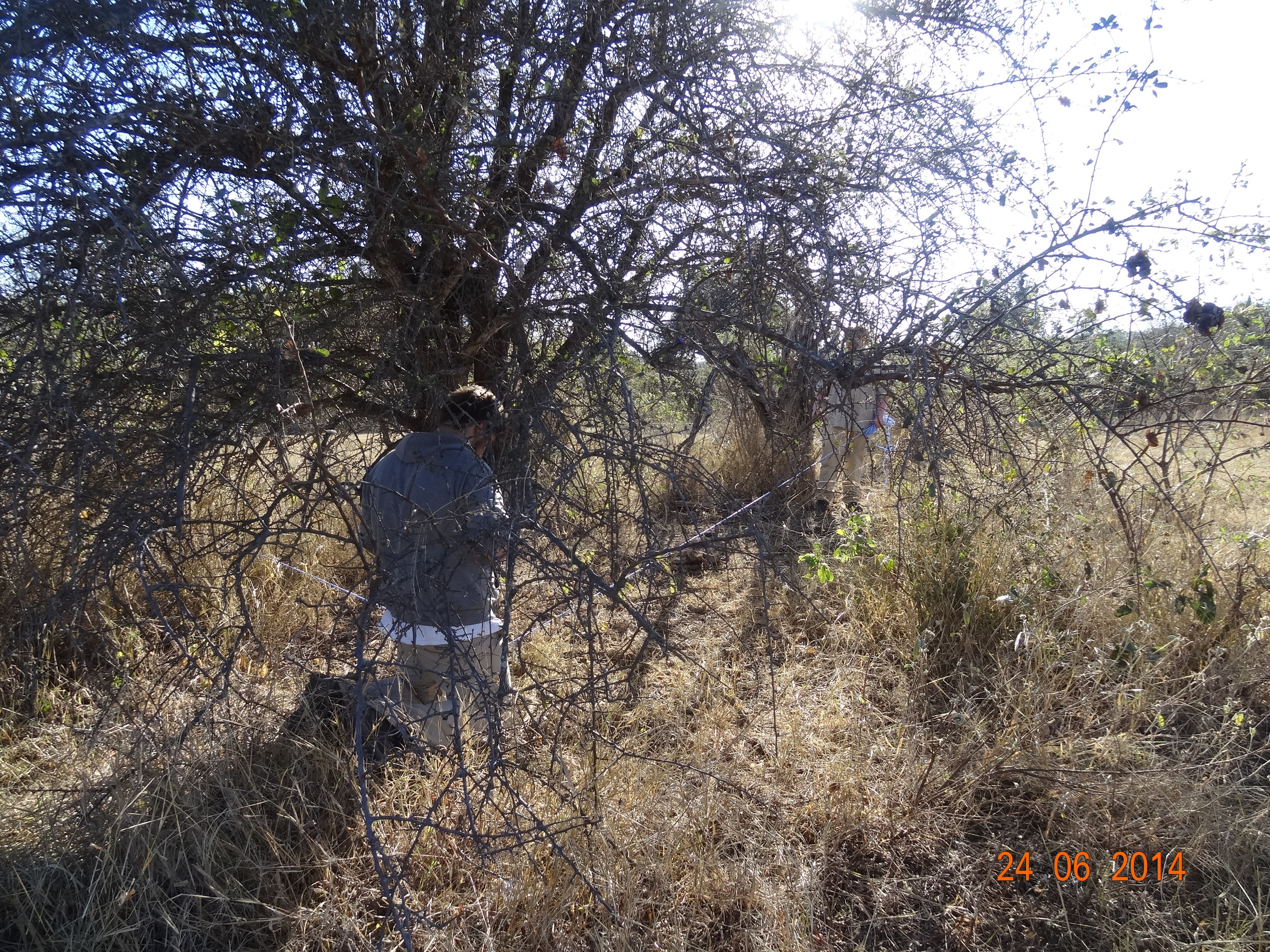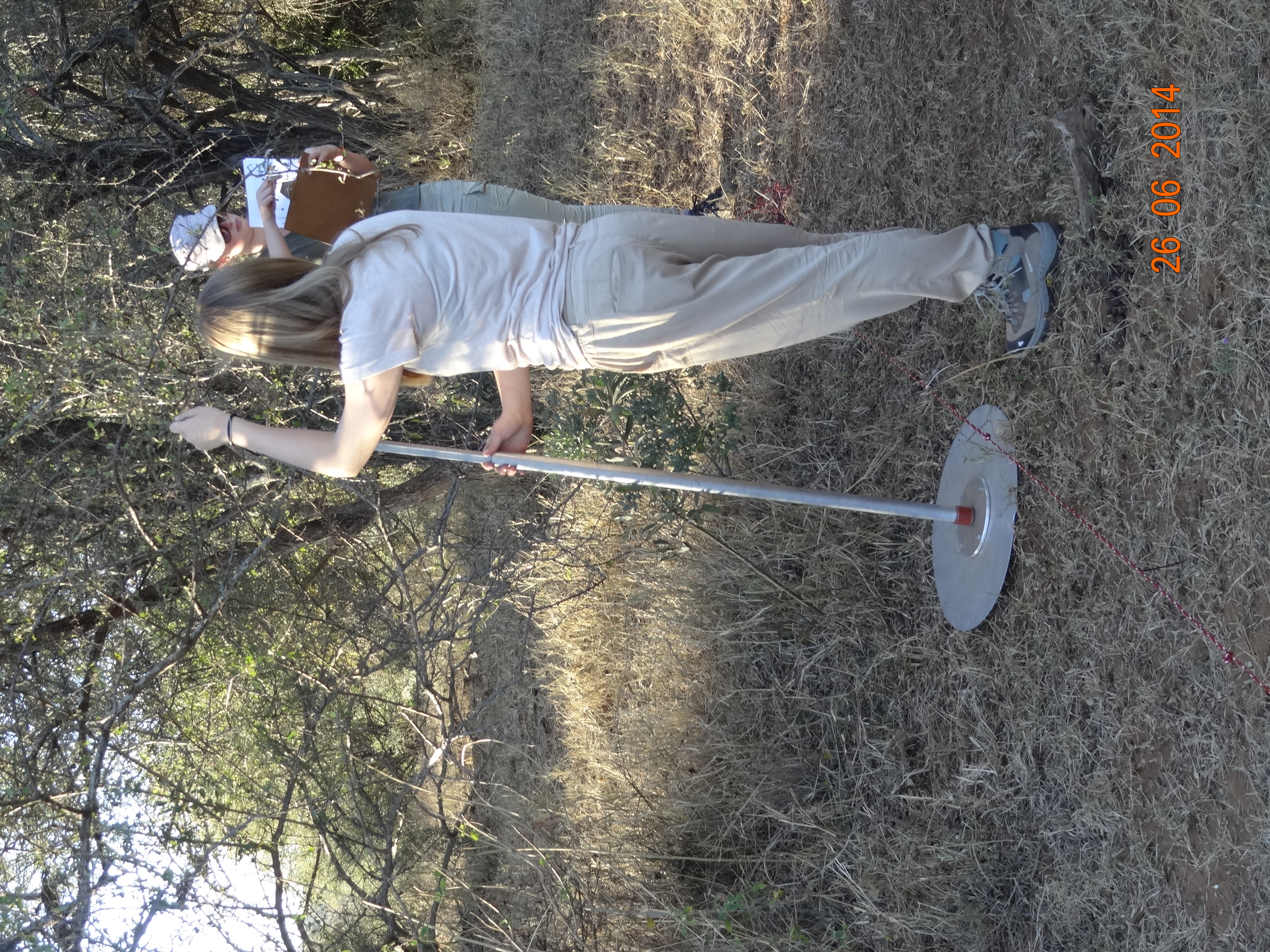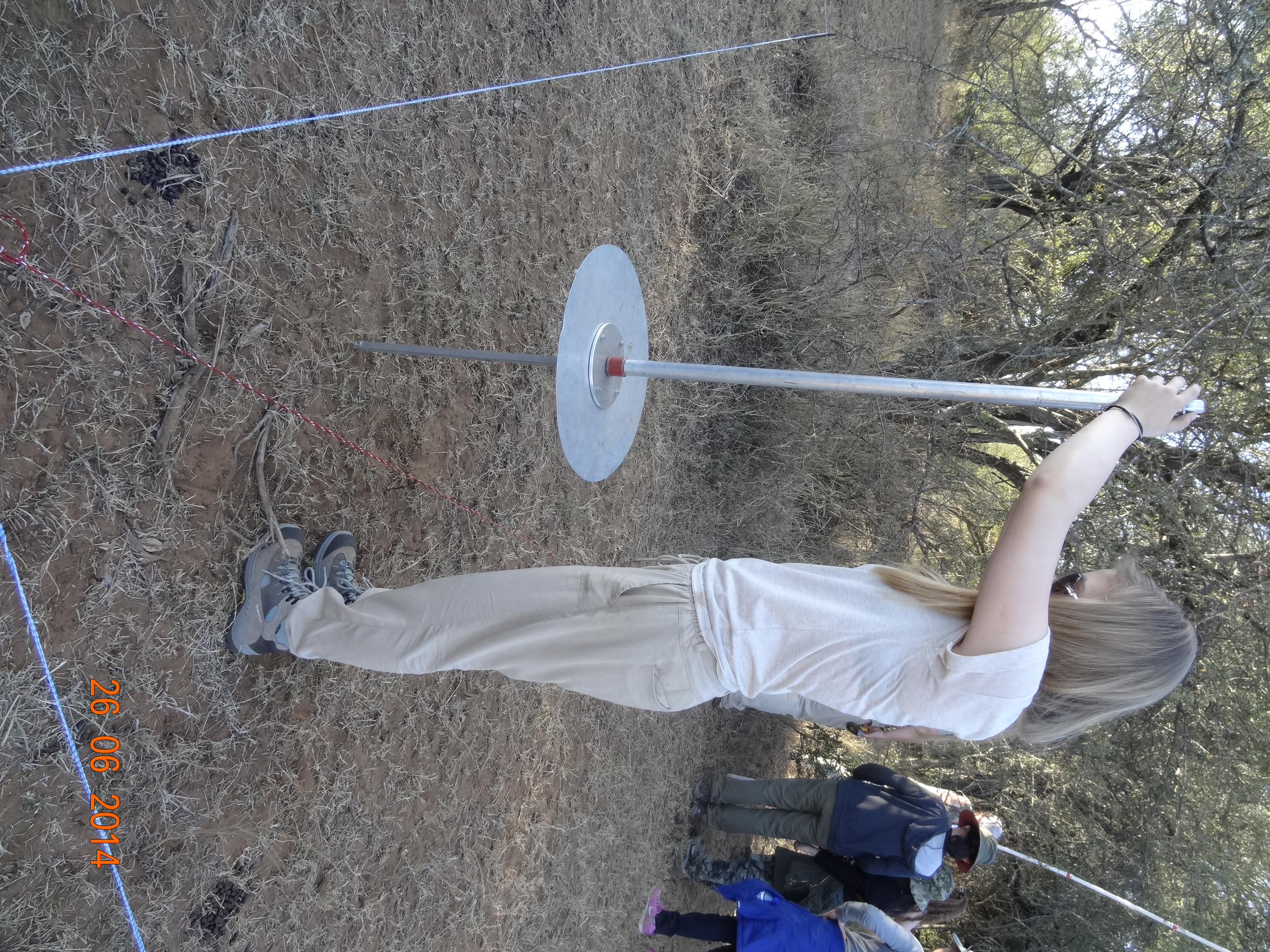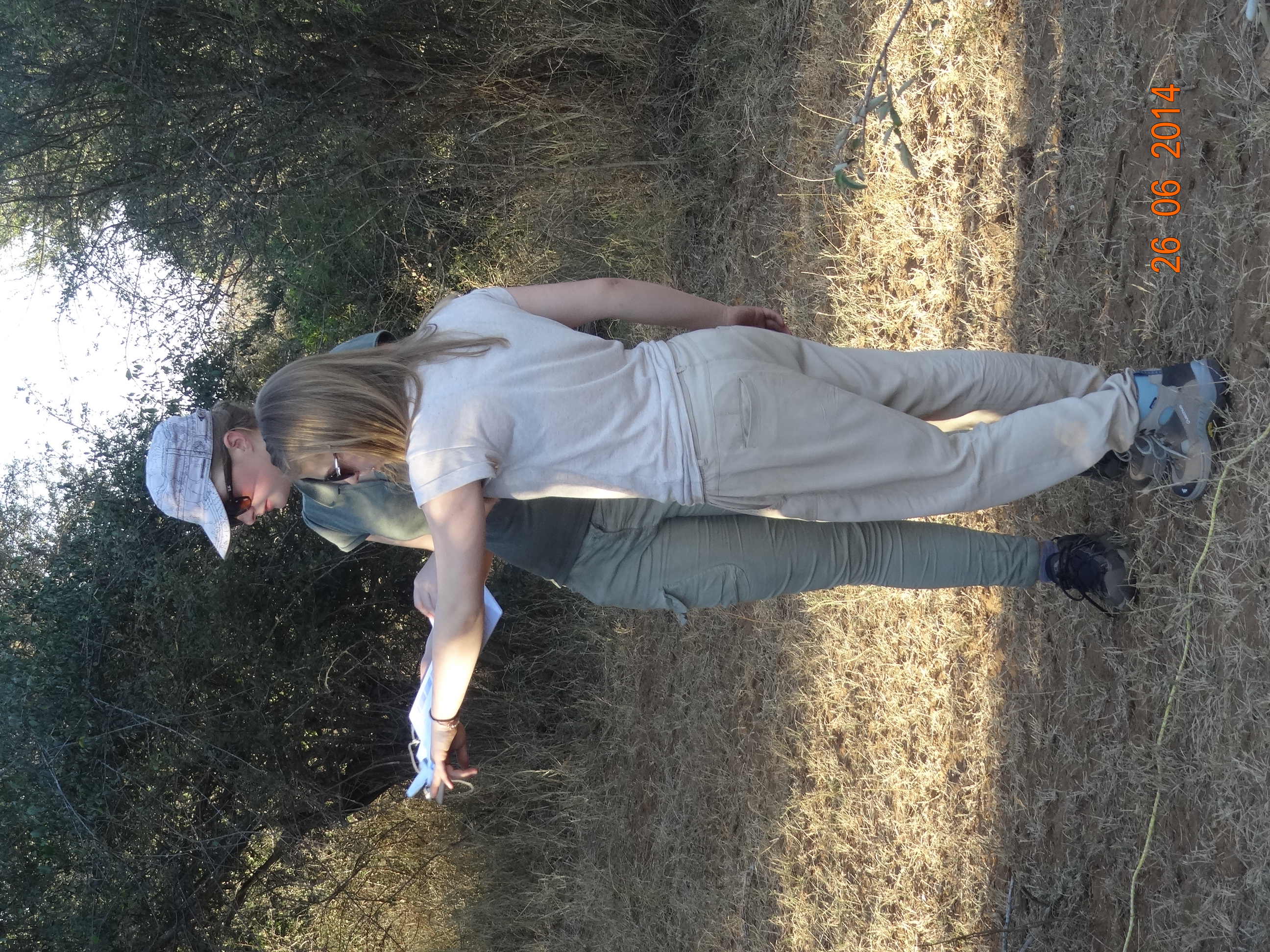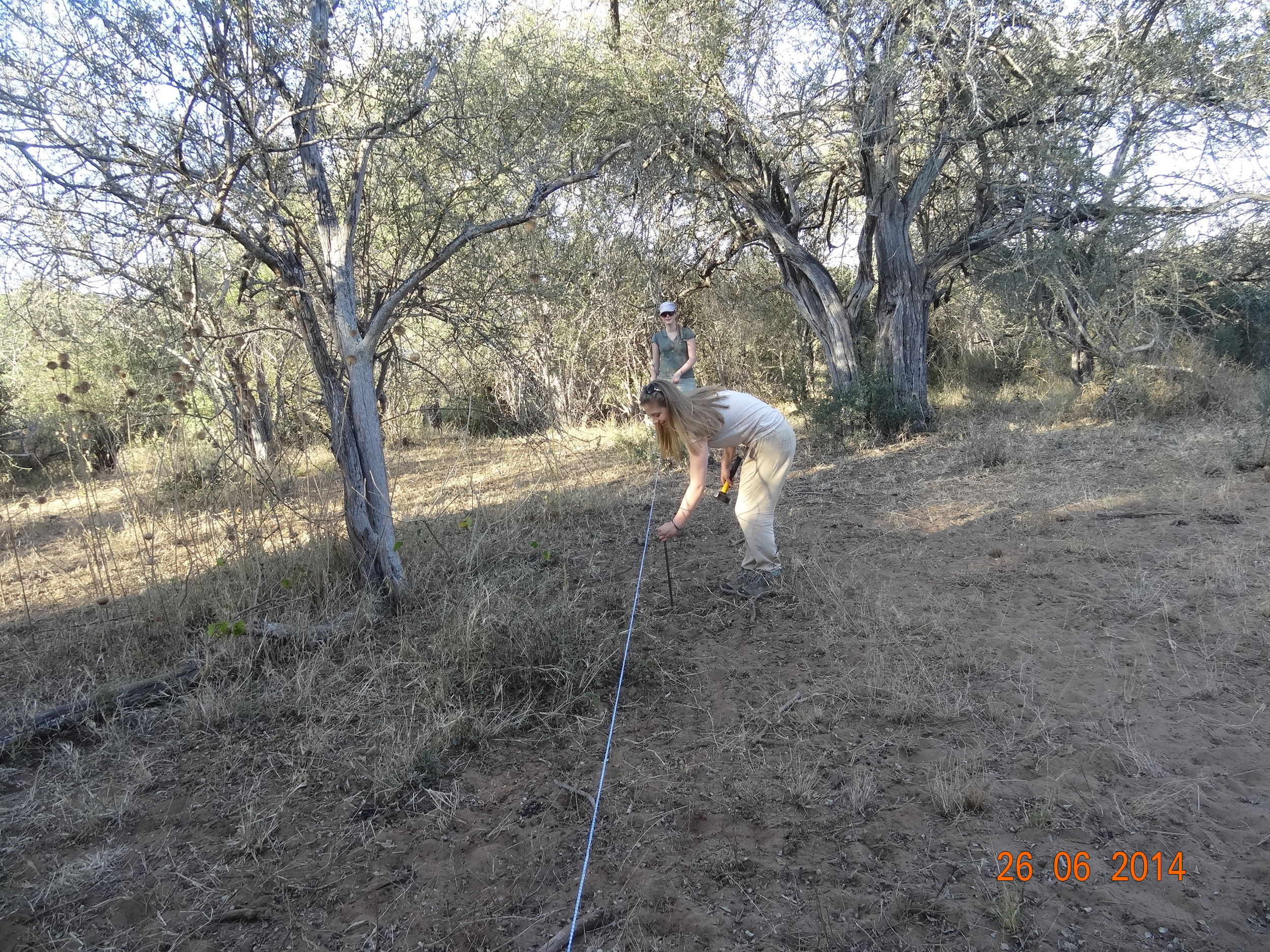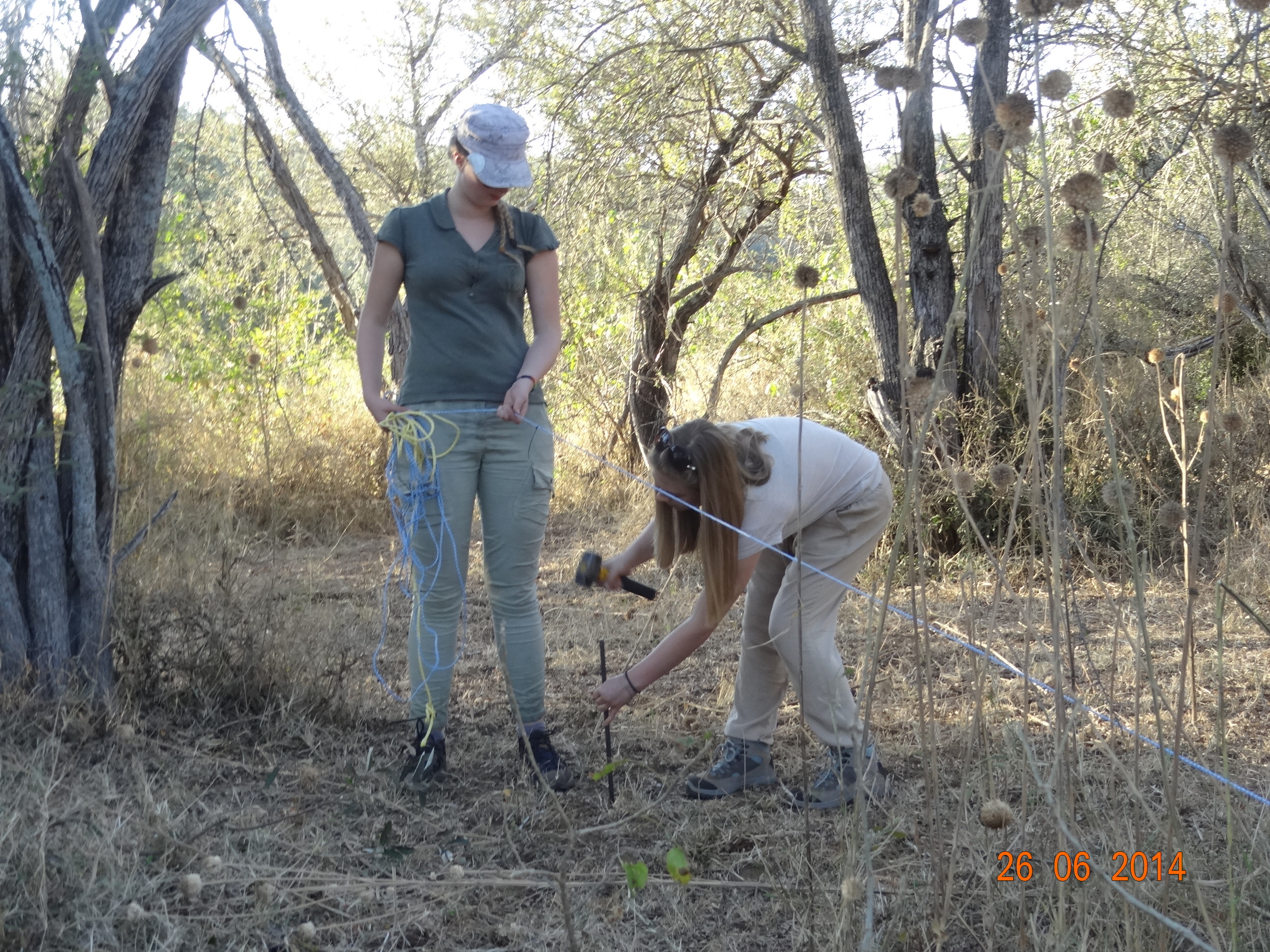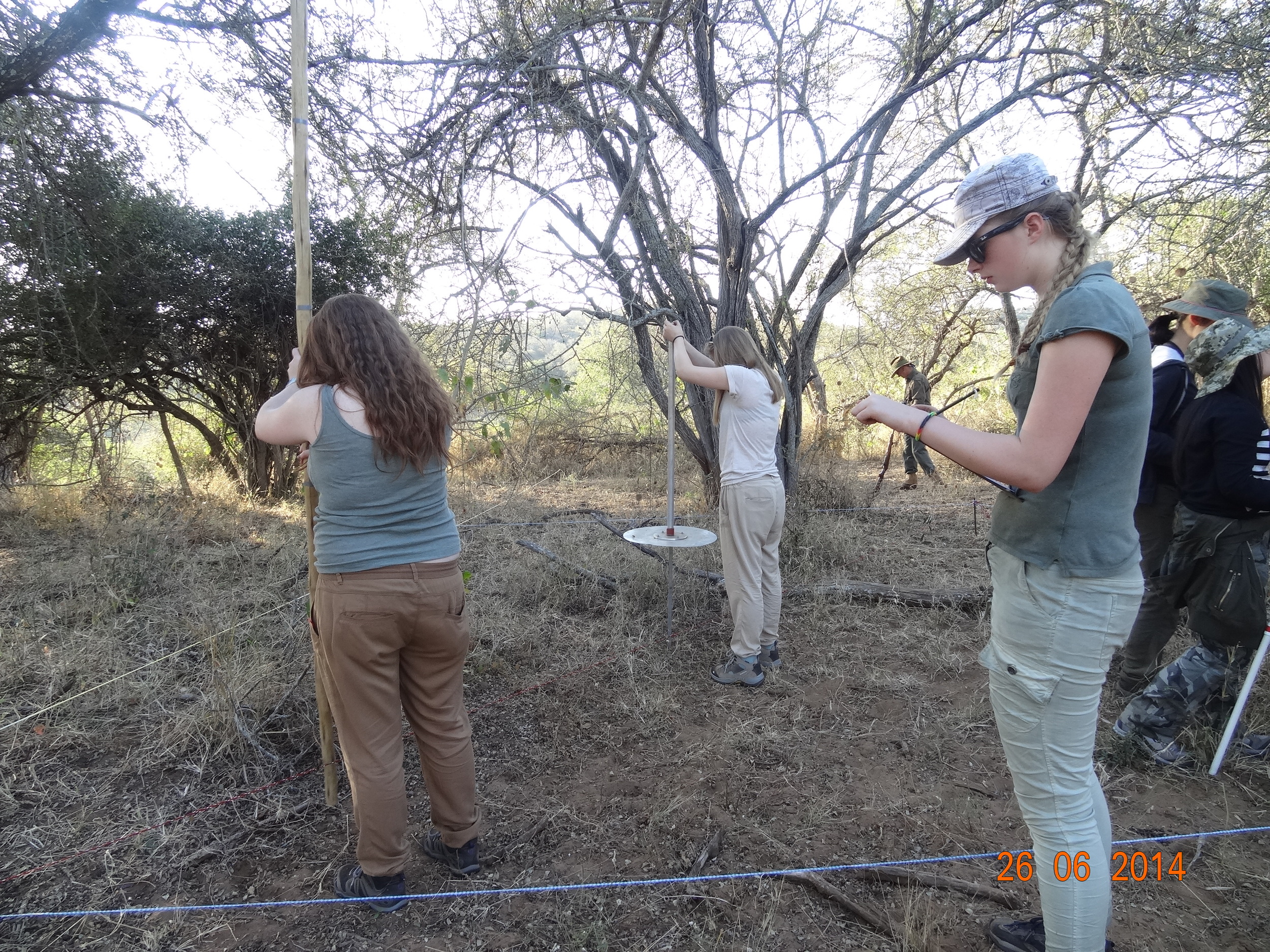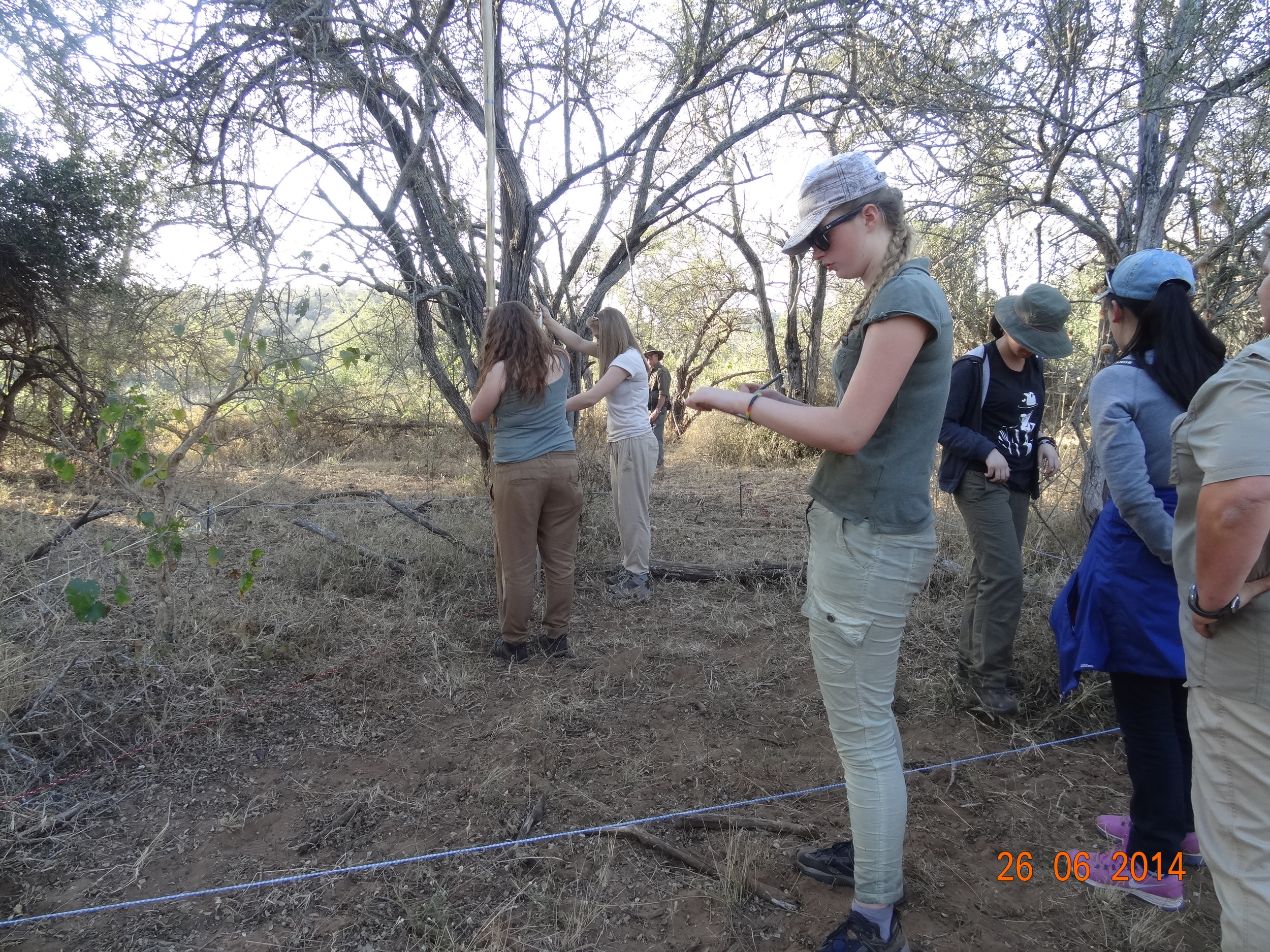When sitting on the peaceful banks of the Olifants river we are serenaded by a multitude of birdcalls that we cannot identify as well as the laughing echos of the local hippo herd. However, it is mostly quiet as the river flows gently by. The setting sun still offers warmth. This winter day has been HOT, probably 30 degrees C, far warmer than any summer day in the Netherlands, a country that feels so far away from this beautiful South African setting.
A morning lecture on herbivores was quite good, despite the lecture format. I even took notes as it went outside of my expertise and was extremely interesting. These creatures of Africa are simply amazing. As one student wrote in her evaluation, “Orla taught me a lot about adaptations in animals that I didn’t know before (like elephants)…” and another wrote, “I looked forward to the lectures from Orla”. I’m so proud of our students for adapting to this new format of learning.
Following the lecture, students were faced with more practical work on insects. Even though the entomologist had mentioned the word "mounting" several times in the context of her lectures, as she handed out the foam boards and pins, it was clear the students didn't really know what they were in for. It wasn't until she started passing out the beetles and wasps that a look of understanding swept across their faces. Expressions of surprise, shock, even horror, and a few big, wide grins were visible in their expectant faces. She walked them through the procedure and all of them successfully completed the task. They were triumphant at the neat pinning of their wings. Then, off to collect the insects from the traps that were set yesterday. All were surprised by the NUMBERS of little creatures!
In the afternoon we embark on a habitat assessment study, one of the main reasons we are here. The sun beats upon us, nearly blinding us. The students are flushed and sweaty, frequently sipping their water. Caz carefully explains the plan but it takes awhile for each student to understand exactly what he or she is supposed to do. The marking of the transect alone takes half an hour as students begin to comprehend the transect map, our relationship to the transect map, and exactly where they'd be taking the data. One student manages the compass, another the rope, and another the posts and hammer. Finally the transect is complete and data collection can begin. Another discombobulated attempt as students try to decide who will record, who will measure height and width for the trees, who will measure the woody contact, etc. However, once they are done they feel accomplished. Several claim that this is the favorite activitiy they have undertaken on the trip. The data sheets demonstrate the work completed.
On the way back to camp, we see a lioness sunning herself on the banks of the Olifants!
At night a debate weighing the pros and cons of Trophy Hunting is conducted. Students number off in ones and twos. Then they combine with their number and are assigned a side of the debate. After twenty minutes, four speakers are selected and face off across tables from each other. Opening statements set the stage. Counter arguments are presented. Members of each team sitting at the sides can raise their hands and contribute to the debate. They are making good points on both sides. The staff have appeared to keep their opinions off the table but have stepped in to advise each side of the debate. It is interesting and students clearly are put in a position to consider what they think of trophy hunting. However, as an educator, I think this event would have been more significant to the students and more effective had the students been given articles to read and a small assignment on the topic before even coming to South Africa. Regardless, the thinking is deep and any Theory of Knowledge (TOK) teacher would have been thrilled with the night.
As the debate draws to a close, the African winter night temperatures settle in and send us scurrying for our sleeping bags and beds eager for another day in the bush.
